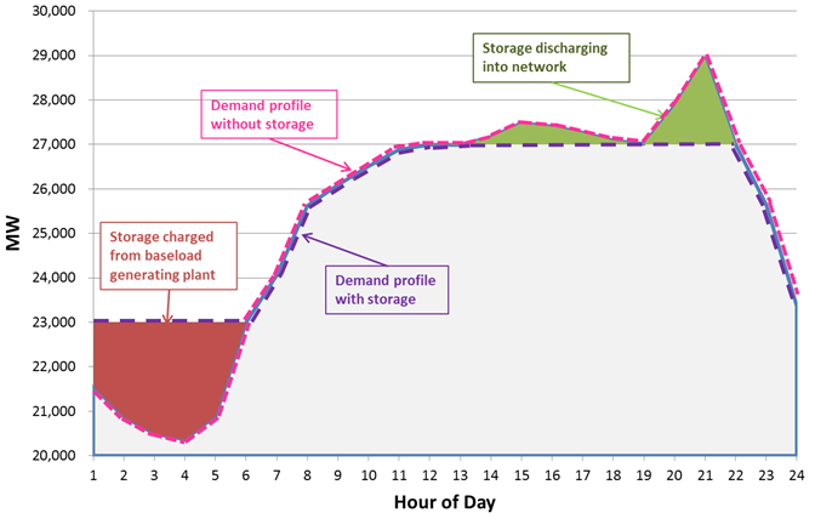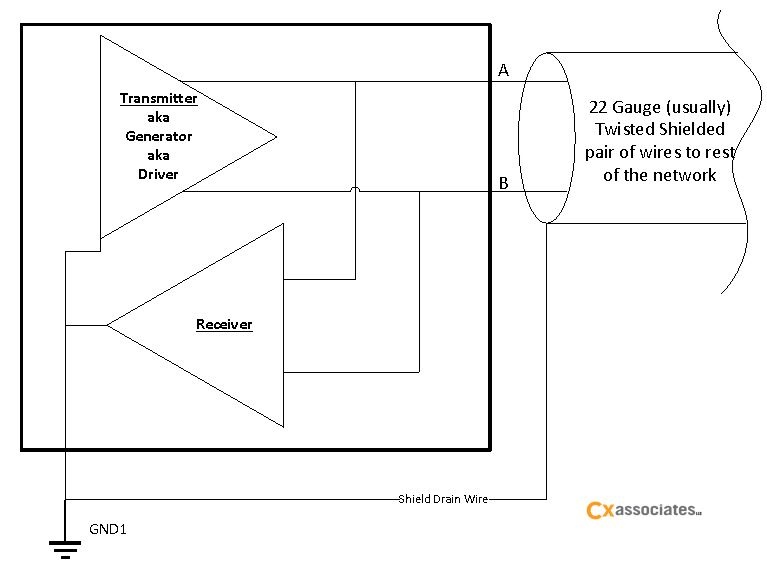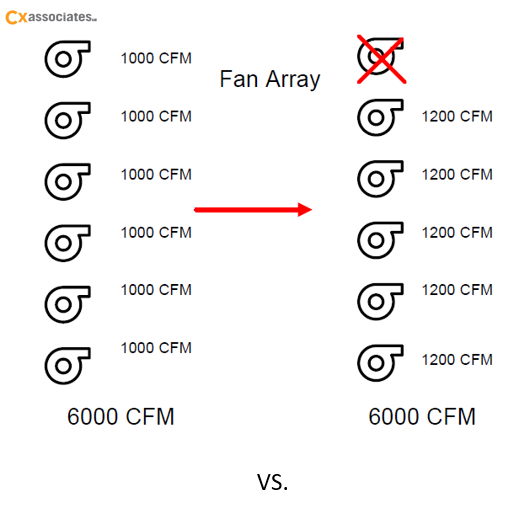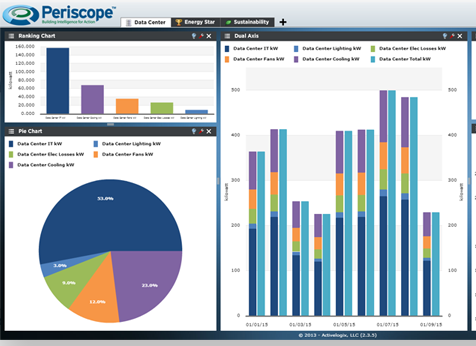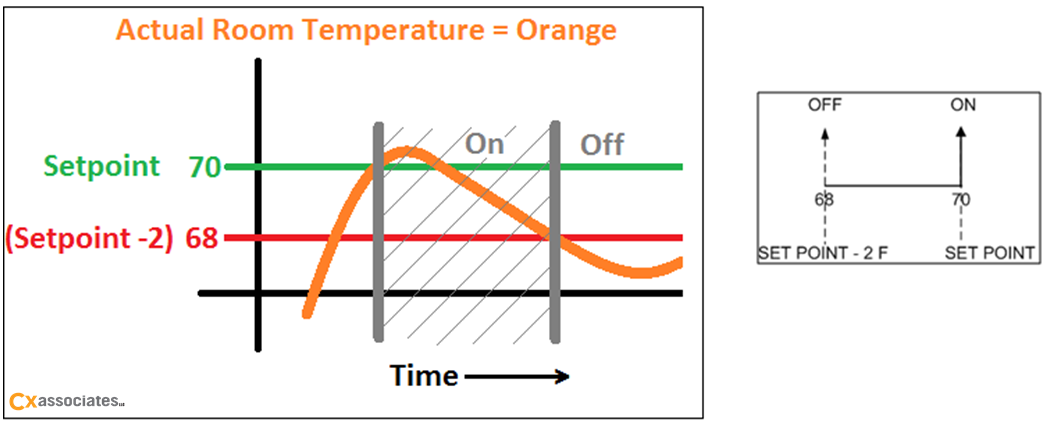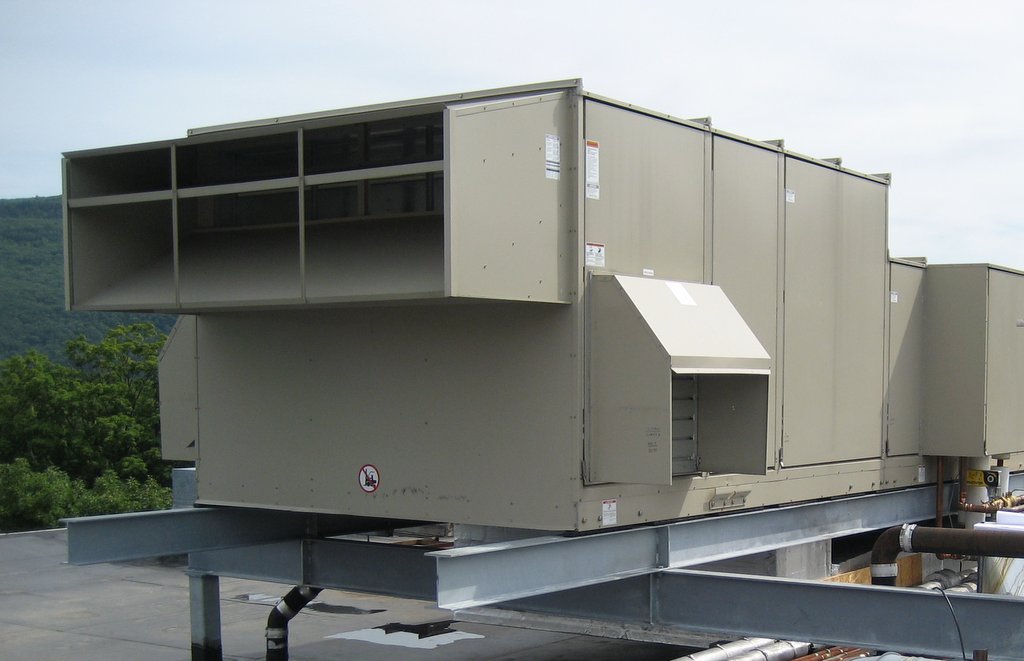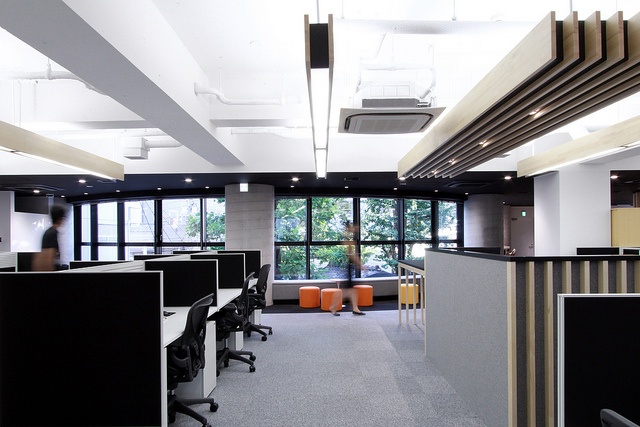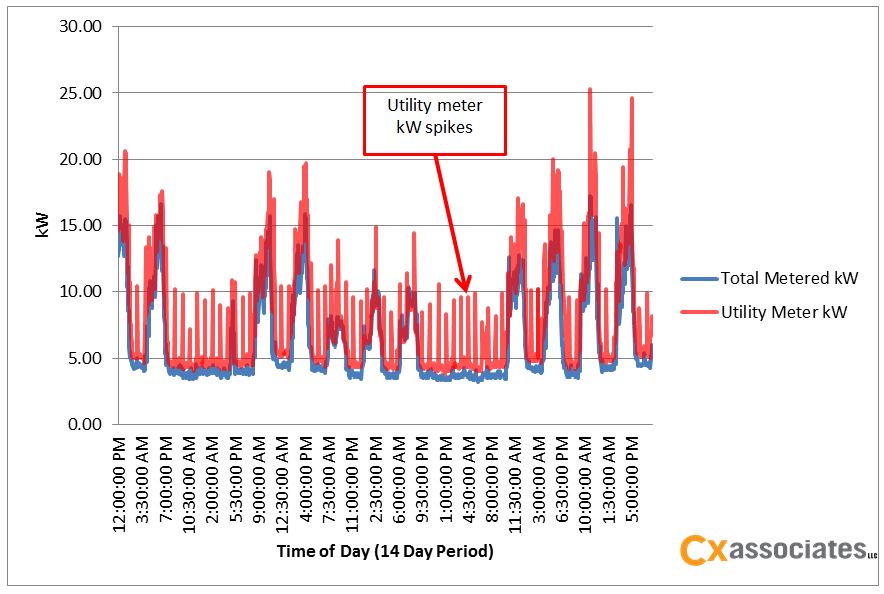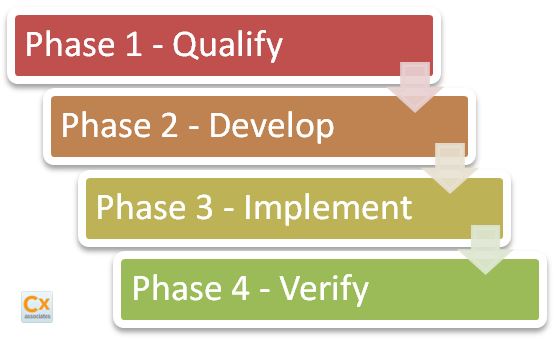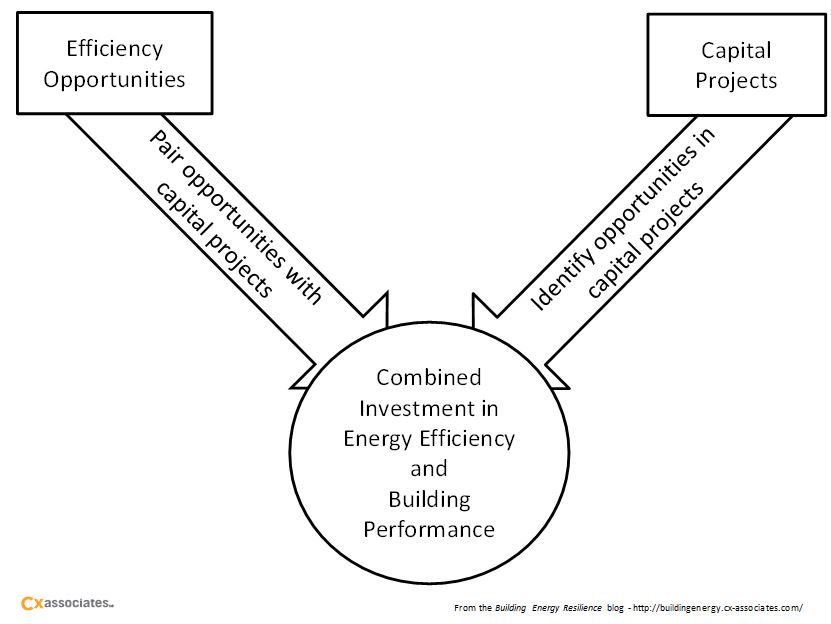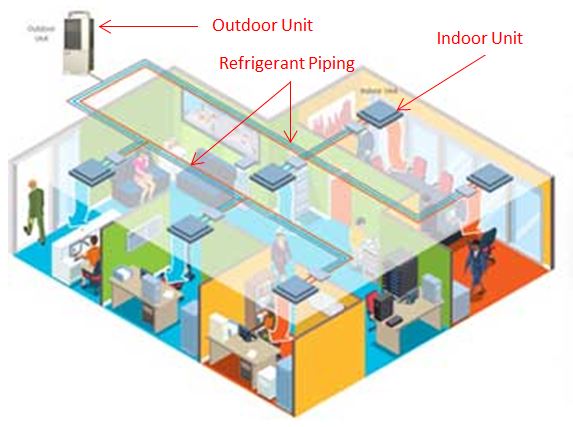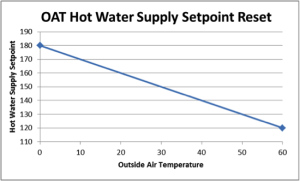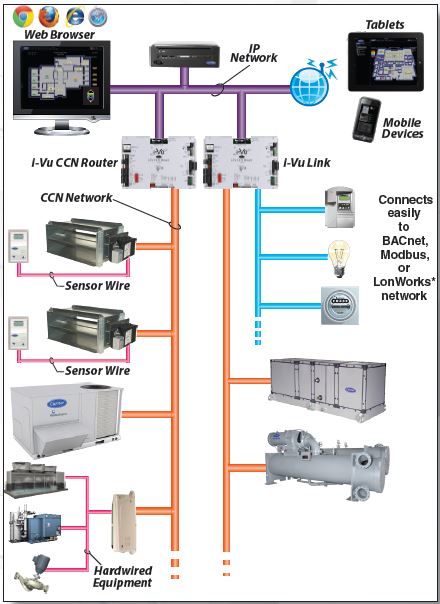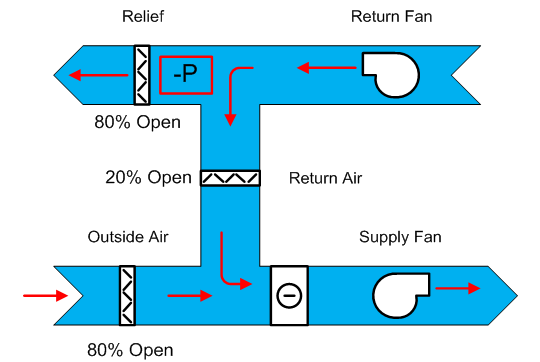If you’ve ever taken a 101-level business, economics, or information technology course, you may recognize the term “fear, uncertainty, and doubt” and its acronym, FUD. The phrase’s origins date back to the 1920s and was often used as a sales technique where the salesperson would work to create FUD so that their customers would not consider switching to a competitor’s product or service. The term is often linked to IBM in the 1960s which used the practice to keep their clients from switching to other technology companies’ products – there’s that old axiom, “nobody ever got fired for buying IBM equipment.”
6 min read
Fighting Back Against Fear, Uncertainty, and Doubt (FUD)
By Eric Hauser on Jun 17, 2025 8:00:00 AM
3 min read
Mastering Building Enclosure Field Testing: Getting it Right from the Start
By Mike LaCrosse on Apr 16, 2025 8:00:00 AM
Building enclosure field testing is critical to construction project success. These tests verify that control layers perform as designed before they're concealed or made inaccessible. However, our experience shows that project teams are frequently blindsided by testing requirements, ownership questions, and specification details—creating costly surprises and schedule disruptions.
3 min read
Refrigerant Evolution: From Ice Blocks to Climate-Conscious Cooling
By Charlie Maitland on Jan 29, 2025 10:00:00 AM
Picture New England in the 1800s: teams of workers carefully cutting massive 500-pound blocks of ice from frozen lakes, hauling them across difficult terrain using horse-drawn sleds and primitive tools. This was the reality of the ice trade that once thrived in Vermont and throughout New England. In those days, refrigeration was a luxury few could afford.
5 min read
An Overview of a Building Energy Assessment
By Liza Boyle on Jul 10, 2024 10:30:00 AM
We are in the midst of completing a large number of building energy assessments for buildings across Vermont, and while the specifics can change a bit, the process is pretty similar for all the buildings. In broad strokes there are three steps: initial data collection and review, site visit and interview, and analysis and reporting. These assessments have been a modified version of the ASHRAE Level 2 assessment, and this overview is somewhat specific to that level of analysis.
2 min read
Historic Brick: Balancing Preservation and Climate Action
By Eric Morrow on Mar 5, 2024 9:00:00 AM
Insulating behind historic brick poses challenges for architects and preservationists alike. While it promises energy efficiency gains, there are concerns about its impact on the integrity of the brick and the building as a whole. However, with proper testing and expert guidance, it can be navigated successfully.
9 min read
The Challenge of Decarbonizing the Grid
By Rachael Straub on Jan 24, 2024 9:30:00 AM
Cx Associates is a mission driven energy engineering firm that works with buildings, mostly Commercial and Industrial buildings, and one of our central missions is to be part of the solution to climate change. Professionals in our field understand the challenge we’re facing. The Biden Administration National Climate Task Force has set the goal of a 100% net-zero emission economy by 2050. To meet this goal, we need to decarbonize the grid, but renewables account for just 13% of electricity generation in the U.S. While that’s close to a tripling of levels a decade ago, we still have a long way to go.
5 min read
Onboarding with Purpose
By Eric Hauser on Aug 2, 2023 10:00:00 AM
Have you ever started a new job and your first day goes something like this: You arrive, and no one was expecting you or realized you were starting that day; you didn’t have a workstation set up; no one knew how to get into your computer; there was no work for you to do; and no one knew which forms you needed to complete to get you enrolled in benefits, payroll, etc.?
3 min read
Striving for Net Zero: Part II
By Krystina Kattermann on Jul 12, 2023 10:00:00 AM
Over the last few years, climate action has become a central focus for governments, and the business case for doing something about climate change has become clearer than ever before. With this shift, “Net Zero by 2050” is a term that seems to get thrown around by organizations, businesses, and municipalities alike. But what does it mean, and how do we get there? We continue our endeavor to answer this question in the second part of this two-part blog.
9 min read
The Case for Hourly Emissions Accounting
By Daniel Jordan on Jun 7, 2023 10:00:00 AM
Last month, at the close of Vermont’s legislative session, the House and Senate agreed to create a Legislative Working Group to investigate reforming VT’s Renewable Energy Standard (RES). This is a big deal because the RES sets the rules by which Vermont utilities claim their electricity is renewable. And now those rules might change.
7 min read
Striving for Net Zero: Part I
By Krystina Kattermann on Nov 30, 2022 11:00:00 AM
Over the last few years, climate action has become a central focus for governments, and the business case for doing something about climate change has become clearer than ever before. With this shift, “Net Zero by 2050” is a term that seems to get thrown around by organizations, businesses, and municipalities alike. But what does it mean, and how do we get there?
7 min read
Energy Management with EMIS
By Daniel Jordan on Nov 3, 2022 10:00:00 AM
Cx Associates now offers an Energy Management and Information System (EMIS). We’ve built a set of customizable dashboards to serve up energy insights, fault diagnostics, and utility-grade cost savings in a browser-based platform. And we’re ready to get yours launched.
4 min read
Forgoing Band-Aids: Approaching and Fixing Building Issues Holistically
By Daniel Tuhus-Dubrow on Jun 28, 2022 10:43:00 AM
June 2022 update: Given the current supply chain and labor shortages the construction industry is facing in 2022, looking after your building's existing systems becomes even more important. With equipment delivery for major systems sometimes many months away, retrocommissioning your existing systems can help tune them up to keep them in tip-top shape to get more usable -- and efficient -- life out of them.
When people ask me what I do for work, I generally tell them I’m a building systems engineer, with a big focus on making facilities more energy efficient and comfortable for occupants. One common part of my job entails going to a building to perform an energy audit or assessment. During these visits, we follow the same straightforward outline:
- Walk through the site
- Inventory all energy-related equipment including lighting, mechanical systems, building envelope, etc.
- Speak with the building operator about how they run the building
- Ask the building owner, occupants, and operator about and any issues or concerns they have regarding maintenance, equipment that is not working properly, or comfort problems.
5 min read
Our Journey Towards Equity, Diversity, and Inclusion
By Eveline Killian on Jun 16, 2022 11:00:00 AM
It has been two years since the latest onset of this country’s reckoning with the unequal treatment of Black and People of Color in our society. While the murder of George Floyd was a turning point for many, since then the division within our country seems only to be growing wider, with each ‘side’ becoming more entrenched and insistent in their perspective.
8 min read
Decarbonization: Fight Climate Change with Your Building
By Daniel Jordan on Apr 26, 2022 11:00:00 AM
Your building’s climate impacts begin with every mechanical, electrical, and envelope system on which it’s built. Identifying effective greenhouse gas (GHG) reduction measures requires an in-depth knowledge of a building’s systems and how they interact. That’s where our decarbonization service can help.
5 min read
Blower Door Testing: Hand-in-Hand with Commissioning
By Mike LaCrosse on Mar 31, 2022 10:00:00 AM
In Vermont’s commercial construction industry, the word is well out there by now that the 2020 Commercial Building Energy Standards mandate building air barriers receive special attention, to some degree – either at post-envelope construction by way of a blower door test, or throughout the construction phase by way of commissioning (no blower door test). I’ve discussed portions of this in the past when it was relatively new. The 2021 IECC release now also mandates either air barrier commissioning or blower door testing. It will be some time before states begin to adopt this version of the code, but it is only a matter of time. So, I thought it a good idea to get out ahead and discuss why I think we, as an industry, should be considering the two of these options in harmony, rather than separately.
5 min read
Green Incentives Reboot: Creating True Incentives to Reduce Carbon Emissions
By Eric Hauser on Mar 16, 2022 10:15:00 AM
Nearly ten years ago, in June of 2012, Cx Associates launched our Green Incentives program. Initially aimed at reducing the carbon footprint of employee commuting and work-related travel, the program provided free bus passes to any employee who wanted one, a free personal CarShare Vermont membership, and provided “incentives” (rewards? More on this in a bit) for employees who walked or cycled to work. At the same time, we stopped offering free parking to employees.
In 2014, Cx Associates was awarded the 2014 Governor’s Award for Environmental Excellence for our Green Incentives program. By most measures, the program was a success! We had achieved nearly 100% employee participation year over year, had reduced miles driven, and caused employees to walk and bike to work more frequently.
Or so we thought.
As we sat on our laurels for the next few (ahem, 7?) years, it began to become clear that we could do more. And in fact, the more we considered the “incentives” we were offering, the less they seemed like actual incentives, and began to look more like rewards. They were not really changing behavior. Many of our employees live close enough to the office that they would happily walk or cycle to work even if we offered free valet parking. Others were already committed public transit users and wouldn’t drive to work if we wanted them to. Our “award-winning green incentives program” sure sounded nice on paper and in our marketing materials, but there were no teeth behind it. We had failed to walk our talk.
3 min read
Case Study: Energy Efficiency Done Right in Burlington
By Krystina Kattermann on Feb 17, 2022 10:00:00 AM
Main Street Landing’s Lake and College building on the Burlington waterfront houses important and community-loved businesses including Seventh Generation, Skinny Pancake, and the Peace and Justice center as well as a performing arts center and community gathering spaces. Main Street Landing (MSL) is a property owner member of the Burlington 2030 District, members of which aim to decrease their buildings’ energy, water, and transportation related emissions by 50% compared to the district baseline by the year 2030. MSL takes their membership seriously, fully committing to implementing changes year after year to work towards these goals.
4 min read
Seeing Value in Installation Checklists for the Building Enclosure
By Mike LaCrosse on Jan 26, 2022 11:00:00 AM
I’m excited to have recently joined the group of like-minded and down-to-earth individuals that comprise Cx Associates, and I’ve quickly learned that all of us here have a vested interest in expanding our minds and honing our craft. A huge part of that is information sharing with one another. In that vein, I’ve had opportunities to catch meaningful snapshots of the MEP commissioning process, allowing me to reflect closely on the process as I know it for the building enclosure. Lately, I’ve been asking myself, “What can be done better on the building enclosure side?” I think one of those things is employing installation checklists.
5 min read
Six of One: GHG Trade-offs in Controls Strategies
By Daniel Jordan on Jan 19, 2022 10:00:00 AM
How much greenhouse gas is in our electricity? This question isn’t just academic for those of us working to decarbonize buildings. In applications that use some combination of fossil fuel and electricity—which is common!—controls strategies for decarbonization depend on being able to make GHG comparisons between fossil fuels and electricity. These scenarios play out in day-to-day commissioning work.
4 min read
Ventilation: Is your Building Prepared for Winter?
By Eveline Killian on Oct 13, 2021 10:00:00 AM
The rollercoaster that is the pandemic has shown us that fresh air and purging of room air has an enormous influence on the spread of a virus. The chance of contamination increases by viral load (how much of the air has the virus in it) and the length of time a person is exposed to this contaminated air. The purpose of ventilation is to move the air quickly away and out of the building to decrease both of these conditions.
5 min read
The Importance of Building Owner Training
By Krystina Kattermann on Oct 6, 2021 10:00:00 AM
I was recently involved in a commissioning (Cx) project that involved an owner’s training scope that went beyond the general Cx scope or LEED requirements and wanted to share my insights into this experience. For our standard training review scope, we ensure requirements for training are included in the specifications and review each subcontractor’s training plan ahead of the training session to ensure it will meet the requirements of the project contract documents. This also provides an opportunity for the owner to review the plan ahead of the training and indicate whether there are other items they’d like to see covered. However, this training review approach leaves a gap in the process, as the level of detail provided during the actual training session may not align with the expectations of the Cx agent or the owner/operator, and the starting expertise of the building operator varies greatly project to project.
2 min read
Adapting the OPR for the Future of Work
By Tate Colbert on Sep 30, 2021 10:00:00 AM
Few documents are as important to commissioning providers as the Owner’s Project Requirements (OPR), it is our building block, our map and compass used to navigate the project to success from pre-design to occupancy. It's obvious this is an important document to us at Cx Associates, too. A search of our website resulted in three full pages of hits of the acronym. We’re know this document inside and out, from developing them, to reviewing pre-existing OPRs, to gently reminding contractors and designers that the document exists, but until about a year ago there was only one way around an OPR.
3 min read
Climate Action Planning for Small Professional Services Businesses
By Rachael Straub on Sep 16, 2021 10:00:00 AM
Cx Associates is a mission driven engineering firm, applying concrete solutions to complex problems. A subset of these problems requires solutions that are a lot less tangible than the engineering solutions we seek to implement every day. Take climate change, for example. While the symptoms of climate change are real-world and concrete (rising sea level, measurable increase in extreme weather events that can be charted and graphed), the solutions to climate change are often conceptual and fraught with uncertainties. There is plenty of research to suggest that humanity has the technical solutions to climate change well within its tool belt. The uncertainly lies in application. What does a carbon-free transportation system look like? What’s the right mix of electric and public transportation and bike riding? How will populations be impacted when these changes mold habits and limit choices?
4 min read
One Year Later: How Cx Associates is Addressing Justice, Equity, Diversity, and Inclusion
By Lauren Hagen on Jun 2, 2021 10:30:08 AM
Last June Cx Associates, along with many other businesses nationwide, openly and emphatically stated our support of Black Lives Matter and recognized the immense amount of work we as individuals, a company, business community, and society need to do to address and dismantle systemic racism. It’s been a long and challenging year on many levels since then, but Cx Associates has made it a priority not to let those challenges hinder our commitment to pursuing justice and equity for all. We’re dedicated to transparency and accountability in this process, and we plan to continue to update our network of clients, partners, and friends on our progress.
2 min read
Cx Associates Joins Global Community Mobilizing to Fight COVID-19
By Lauren Hagen on May 26, 2021 10:00:00 AM
Two weeks ago, Cx Associates made a donation to COVAX, the vaccine procurement and supply operation led by UNICEF to ensure “global equitable access to COVID-19 vaccines”. By joining UNICEF’s Humanitarian Circle, the donation will support UNICEF’s campaign to secure two billion COVID-19 vaccine doses delivered to over 180 countries worldwide. Cx Associates was compelled to act swiftly and support this cause, recognizing that health for everyone, everywhere is imperative to justice and equity.
6 min read
Creating a Positive Remote Work Culture
By Eric Hauser on May 19, 2021 10:00:00 AM
Cx Associates was obviously not alone in shutting down our main office in Burlington, Vermont in March 2020 as the coronavirus pandemic hit the United States. Employers across the country shut down their offices and told their employees to work from home for the foreseeable future. Last summer, Cx Associates took measures in our office to enable a slow (and optional) return to working in the office – we constructed plastic barriers between workstations, installed HEPA air filters at each desk, and mandated mask use when not at one’s desk. But one year later, we are still very much a distributed team; we have one employee who already worked remotely, and many others who either prefer to work from home when possible and/or are not yet comfortable going back to the office.
3 min read
Small Decisions with Big Impact
By Jamie Hand on May 5, 2021 10:00:00 AM
A while back, we ran out of freeze spray, an essential tool we use for functional testing. I was about to order some new bottles, when Matt Napolitan suggested I pick a brand with a low global warming potential (GWP). Great idea! Although I'm generally quite aware of sustainability issues, I confess I probably wouldn't have thought about this; I would have just purchased the same brand we had ran out of. So, I wanted to share this quick story about the impact that seemingly small decisions can have on greenhouse gas emissions.
5 min read
Indoor Air Quality (IAQ) Assessment Process and Report
By Katie Mason on Apr 8, 2021 10:00:00 AM
Cx Associates has posted several blogs about an HVAC systems’ contribution to keeping building occupants as safe as possible from the COVID-19 virus. But for some building owners and tenants, understanding what they have for an HVAC system and what they can do to make their systems better isn’t immediately known without some help from experts in this industry.
6 min read
Ventilation Control Strategies During COVID-19: Why & How
By Eveline Killian on Jan 27, 2021 10:15:00 AM
Over the past several months, it has been proven that HVAC systems play a role in the mitigation of the spread of a virus like COVID-19. The first line of defense – personal masking and social distancing – is by far the most effective in mitigation, but we’ve learned a lot about HVAC’s contribution to keeping people safe indoors. My last blog covered the why & how of ventilation (fresh air). In this blog I want to focus on ventilation control strategies: why & how the industry evolved from pre-pandemic minimalization, to early-pandemic wind tunnel 24/7, to a common sense, balanced approach on ventilation control.
5 min read
School Airflow Testing and ASHRAE 62.1
By Jamie Hand on Dec 23, 2020 10:00:00 AM
Over the last few months, Cx Associates has helped a number of schools throughout Vermont test their ventilation rates. As we’ve discussed in previous blog posts, providing adequate ventilation rates is an important part of providing good indoor air quality (IAQ), both during the pandemic and normal times. While most buildings were designed to meet a ventilation standard, there are numerous reasons why rooms may not meet the current ventilation recommendations. In most buildings, measuring airflow is really the only way to know that you meet the recommendation.
3 min read
COVID-19 Water System Recommendations for Vacant Buildings
By Katie Mason on Dec 17, 2020 2:59:06 PM
Throughout the COVID-19 crisis, HVAC system recommendations have been a primary focus because of the impact they can have on mitigating the spread of the virus inside buildings. Since we saw a period of time when many buildings were completely vacant and unused, it’s important to ensure your water systems are also safe for occupants before reopening. The concern here is not the spread of the COVID-19 virus, but harmful pathogens such as Legionella (bacteria that can cause Legionnaire’s disease) that can grow in stagnant water.
6 min read
Ventilation During COVID-19: Why & How
By Eveline Killian on Dec 9, 2020 10:00:00 AM
We’ve learned a lot about COVID-19, the spread of a virus, and the mitigation of the spread over the past several months. The recommendation of the first line of defense - masking and social distancing – hasn’t changed since this pandemic started in January 2020, but it seems like every other recommendation has evolved throughout these long months. In our business of HVAC, we have kept up with the industry and CDC recommendations on ventilation and filtration and have been active in assessing commercial and institutional buildings.
4 min read
How to Avoid Air Handling Unit Steam Coil Issues
By Tate Colbert on Oct 7, 2020 11:00:00 AM
Basics of steam coil and face and bypass operation
Many air handling units in colder climates are equipped with steam heating coils. These coils use control valves to modulate the flow of steam to the coil. Due to the low mass of water in a steam coil, it has a higher propensity to freezing when conditions are right. One of the neat ways we’ve design around this is to use a Face and Bypass (F&B) damper arrangement to allow the coil to have maximum steam flow to prevent freezing. The F&B dampers direct a portion of the airflow through the steam coil and another portion bypasses the coil in order to achieve the necessary discharge air temperature and prevent a freezing airstream from damaging the steam coil. Pretty neat, huh?
9 min read
How to do Building Automation System (BAS) Graphics Right: Part II
By Rick Stehmeyer on Sep 17, 2020 10:00:00 AM
In my previous post How to do BAS Graphics Right: Part I, I wrote about the 5 basic rules to BAS graphics I learned during my years as a controls system master integrator. If you’ve not read that post yet, I’d encourage you to go back and give a glance as it’ll put the rules below into perspective, and feel free to ask a question if you got one using the comment section at the bottom of the post. Here’s a quick recap of the rules:
3 min read
Common VRF Issues Part II: Controls
By Walker Calderwood on Aug 20, 2020 10:00:00 AM
In my first blog on Common VRF (Variable Refrigerant Flow) Installation Issues I focused on issues during mechanical and hardware installation that typically lead problems during startup and pre-functional checkout commissioning. This blog will focus on controls issues identified during commissioning design review which usually lead to issues during start up if not addressed up front during design. As mentioned in the previous article, VRF systems can allow for better comfort and overall satisfaction, but if not properly programmed for the owner’s specific application, can lead to numerous complaints during the first year of occupancy.
3 min read
To Return or Not to Return: Considerations for Reopening the Office
By Rachael Straub on Aug 12, 2020 10:15:00 AM
COVID-19 has turned our world upside down. From what we’ve learned about the transmission of COVID, spending time in an enclosed space with others is ill advised, and social distancing means working from home and homeschooling. I’ve been doing the former since March, even though Cx Associates’ offices reopened in June. Reopening the office was not an easy choice to make, as was my decision to remain at home, and I thought I’d write a bit about it.
5 min read
Sustainable Home Appliances: Ventless Dryers
By Jamie Hand on Jul 29, 2020 10:00:00 AM
I started this post before the COVID-19 pandemic. While a lot of our attention has shifted to slowing and fighting the pandemic, I hope you find some refreshment in a lighthearted but still important sustainability story.
7 min read
Reopening Schools: Understanding and Prioritizing HVAC Preparedness
By Eveline Killian on Jul 6, 2020 10:15:00 AM
The prospect of reopening schools under the new CDC guidelines in response to COVID-19 can be overwhelming for facilities and administrative personnel. In addition to increased surface cleaning, hand washing, maintaining six feet between classroom desks, and wearing face masks, the schools are faced with making decisions on how to best operate their HVAC equipment. As much as the world is trying to help them with these decisions, the HVAC guidelines from the CDC and ASHRAE are all encompassing; it is difficult to identify which measures are applicable and even more difficult to prioritize the measures under a school’s constrained budget. This may overburden an already burdened school facilitator.
2 min read
Current Considerations for School Re-opening
By Tate Colbert on Jul 2, 2020 10:00:00 AM
As we are all learning to adjust to life with COVID-19, many areas are considering re-opening schools for the coming school year. Although many teachers are finally starting to unwind into a stranger-than-usual summer break, now is the ideal time to get a jump on adjustments to school operations to make in-person education as safe as possible for students, faculty and staff alike.
1 min read
Cx Associates Becomes Carbonfree® Small Business
By Lauren Hagen on Jul 1, 2020 10:00:00 AM
Last year, Cx Associates committed to offsetting the environmental impact of our business operations. After thorough research, we selected Carbonfund.org’s Carbonfree® Small Business Partnership Program. Through this initiative, we’ve neutralized nearly 80,000 pounds of carbon emissions from our estimated annual business operations for 2019 and will continue to do so on an annual basis.
5 min read
Improved Lighting Metrics for Changing Technology
By Wilson Yandell on Jun 3, 2020 12:15:00 PM
Photo by Adam Rouse
6 min read
Building a Better Framework for Work-from-Home Success
By Lauren Hagen on May 20, 2020 10:30:00 AM
On March 10, I returned to a very different world here in Vermont after having spent the prior two weeks visiting New Zealand. While at the Auckland airport on my trip home, I accepted a position at Cx Associates, not knowing how the coming weeks would unfold as the virus was beginning to explode in the states. Upon my return, I self-quarantined for the recommended 14 days, and then the stay-at-home orders and various recommendations kept me here. Ten weeks in, I’ve had to adjust to a new life and start a new job that was never meant to be remote, remotely. I’ve learned a thing or two about working from home amidst a pandemic and would like to offer you some of the ways I’ve found rhythm and comfort among the challenges, and resources to get you started should you feel a certain strategy might be beneficial.
5 min read
Making our Commissioning Process Remote
By Katie Mason on Apr 22, 2020 10:00:00 AM
With the current COVID-19 global crisis, organizations all over the country are actively seeking ways to continue to provide the same level of services to their customers while keeping their employees safe. Cx Associates is known for its rigorous standards in the commissioning process, but a large portion of our work is contingent on our ability to be on construction sites, working with contractors to verify the installation and functionality of equipment. With Vermont’s order that all non-essential employees work from home, and with Cx Associates’ commitment to both keep our employees safe and prevent us from potentially spreading the virus on construction sites, we needed to quickly find a way to provide our on-site services remotely for the essential construction work that continues to move forward in a way that still matches our high standards. This blog discusses our approach to remote site work and how we're continuing to serve our clients while safely social distancing from our home offices.
3 min read
People & Planet during the Coronavirus Pandemic
By Tate Colbert on Apr 8, 2020 10:00:00 AM
In this time of global crisis, it can be hard to cope with some of the new realities we’re all being faced with, whether it’s experiencing isolation due to social distancing, fearing for yourself or loved ones, or dealing with the virus’ economic impact. As a business that strives to engineer a future where buildings are better for people and planet, we can’t help but notice the ways this crisis reflects global warming’s looming themes: it’s going to affect everyone, it has dangerous consequences, and it takes a global effort to combat. While I only have the emotional bandwidth for one global emergency at a time, the environment is still in the back of my mind, and I can’t help but think of the ways the virus and our environment are inextricably linked.
4 min read
COVID-19 & the Race for Isolation: Part 1 – Cooling & Dehumidification
By Matt Napolitan on Apr 2, 2020 11:00:00 AM
Hospitals are racing to create as many isolation rooms as possible to help effectively care for patients with COVID-19 while keeping healthcare providers and others in the hospital as safe from infection as possible.
3 min read
Five Steps to Turn the Tide on the Climate Crisis
By Jennifer Chiodo on Mar 25, 2020 10:00:00 AM
I’m very focused on the fact that we have only have a short time to change the way we live so that our planet can survive, and our children can have the future we imagine for them. That sounds scary, but what is even scarier is inaction in the face of compelling evidence of climate change.
11 min read
How to Do Building Automation System (BAS) Graphics Right: Part I
By Rick Stehmeyer on Mar 4, 2020 10:00:00 AM
Over the course of my career I have evaluated BAS graphics packages as a function of my daily 9 – 5. I have been doing this since 2002 and in those days, most BAS manufacturers barely had functioning websites. However, the products they sold allowed their vendor networks to create Human Machine Interfaces (HMI) and Graphical User Interfaces (GUI), and these interfaces haven’t really functionally changed a whole lot since those days of pre-broadband internet and before the smartphone was commonplace. Given that we may be stuck with outdated user interfaces for some time to come, it makes it all the more important that proper care is given to how the information is displayed and to ensure users can easily absorb the information they need from the BAS.
7 min read
Energy and Beer – The Path to Sustainability
By Krystina Kattermann on Jan 29, 2020 10:00:00 AM
Vermont is home to a lot of my favorite things. There’s skiing, swimming, music, cheese, apple picking, and more, but perhaps my favorite is Vermont beer. The Burlington area alone has enough breweries to keep one busy for a long weekend – from the classics like Switchback Ale and Fiddlehead IPA, to the ever rotating sours at Foam to the delicious (and highly creative) concoctions coming out of Burlington Beer Co., the 10 mile radius around this small city I call home has something for everyone. Though my love of beer continues to grow, so too has my concern about the sustainability of the beer brewing process.
3 min read
Challenges with Rooftop Units and Factory Controls
By Jamie Hand on Jan 15, 2020 10:00:00 AM
After an early morning departure and a snowy drive, my colleague and I arrived onsite to test, among other equipment, a packaged rooftop air handling unit with factory controls. At first, the unit appeared to check all our boxes, but as we dug into the details, it became clear that this would be a very expensive heating system to operate. This blog entry is about factory controls and the importance of getting into the weeds to identify issues like the one we found with this rooftop air handling unit.
4 min read
Welcome 2020 - Now Let’s Meet those 2030 Goals!
By Katie Mason on Jan 6, 2020 10:00:00 AM
With a new year and a new decade upon us, the popular trend is to create new resolutions and goals. Being an active member of the Burlington (Vermont) 2030 District Engineering Team has me thinking about the District’s and the City of Burlington’s goals and progress for energy, water, and transportation emission reductions. This post outlines what the Burlington 2030 District goals are, how these compare to the City of Burlington goals, and the services our team provides to property owners to help reach these goals.
3 min read
Making Sense of Building Data: Part 1: Overview
By Daniel Tuhus-Dubrow on Dec 18, 2019 10:00:00 AM
Similar to other domains, data from buildings is being generated at an unprecedented pace and scale. However, all of that data is useless if we can’t extract meaning to create value and yield actionable insights. This requires the utilization of protocols or standards to effectively make sense of the data. Project Haystack is one such standard that has been developed over the past several years and allows for the contextual tagging of data in a flexible way, using data from any number of sources.
5 min read
Saving the Planet One Veggie Burger at a Time
By Eric Hauser on Dec 4, 2019 10:00:00 AM
Cx Associates’ work focuses on engineering services that save energy, and thus doing our part to save the planet. All of us also have a strong personal commitment to living as sustainably as we can, recognizing that no one is perfect, and that we all do the best we can. Our employees walk or bike to work, take public transportation, compost, live in walkable neighborhoods, drive efficient cars, and recycle.
3 min read
It’s All in the Lighting: A Closer Look at the CRI Method
By Wilson Yandell on Nov 20, 2019 10:00:00 AM
A few years ago, while living in a small apartment in Montreal’s Plateau neighborhood, I noticed that the lightbulb in my kitchen had burned out. Naturally, I went to the hardware store to find a replacement. After struggling to read the French labeling on several different packages, I ultimately decided to go for the least expensive box of LED bulbs that the store had available. Once I installed the newly purchased lightbulb, I noticed a difference in the way our kitchen looked. Specifically, I noticed a difference in the appearance of the bowl of fruit that always sat on the counter. While the lightbulb illuminated the space, I remember thinking to myself how unappetizing and dull my fruit now looked. This exercise, though unintentional, clarified the importance of a light source’s color rendering capability.
3 min read
Understanding the Basics of a Ground-Coupled (Closed Loop) Heat Pump Design: Part 2
By Tate Colbert on Nov 15, 2019 10:00:00 AM
Thanks for following the second part of the ground coupled heat pump design. If you haven’t already, now’s a good time to go back and read Part 1. In the first part of this post, we discussed the importance of understanding thermal imbalance in a ground source heat pump system and the longevity impacts associated with an imbalanced system. Despite the issues associated with a thermally imbalanced system, there are ways to address building loads with additional technology that will further enhance the performance of the ground-coupled heat pump system, as well as provide long term performance.
6 min read
The United Federation of Energy Transition
By Rachael Straub on Nov 6, 2019 10:00:00 AM
In 2011, a study, co-authored by an engineering professor from Stanford and a transportation research scientist from UC-Davis, found that we could halt global warming, save millions of lives, reduce air and water pollution, and develop secure, reliable energy sources in 20-40 years. Nearly all of this could be done with existing technology and at costs comparable with what we spend on energy today.
3 min read
USP 800 Pharmacy HVAC Testing – The Devil is in the Details: Part 1
By Matt Napolitan on Oct 23, 2019 10:00:00 AM
A large healthcare client of ours recently opened a brand new USP 800 compliant compounding pharmacy, which we commissioned. We collaborated with the engineering team and the hospital during the design phase to help ensure prior issues weren’t repeated, and the hospital’s concerns were thoroughly articulated and addressed. At the conclusion of the design phase, the team was confident that the design direction was solid and would give the hospital what they were looking for.
4 min read
Understanding the Basics of a Ground-Coupled (Closed Loop) Heat Pump Design: Part 1
By Tate Colbert on Oct 9, 2019 10:00:00 AM
The ground source heat pump is a wonderful technology that will be vital in achieving energy efficiency goals this century. This technology isn’t new, but it is beginning to become more accepted as a viable solution for large scale, high efficiency HVAC performance. There are two main types of ground source heat pump systems: those that are “Ground Water” (also called Open Loop) and those that are “Ground-Coupled” (also called Closed Loop), see Figure 1 below. In either case, the water from the ground is pumped to a heat pump, where heat is either extracted out of or rejected into the ground and moved into or out of the conditioned space.
3 min read
A New Metric for 21st Century Buildings: The Carbon Emissions Intensity (CEI)
By Jennifer Chiodo on Sep 25, 2019 10:00:00 AM
As you know, Cx Associates’ work focuses on making buildings perform better for occupants, operators, owners, and for the planet. A common metric we use to assess building performance is the energy use intensity (EUI) which Katie has discussed in her recent blog posts. While attending the recent IEPEC Conference in Denver, I had a discussion with someone familiar with Xcel Energy’s work to be a net zero carbon utility in the relatively near future. We realized that EUI is an insufficient metric for guiding energy program investments at their customer sites. Ultimately, to drive carbon emissions down to a sustainable level that will halt and begin to reverse the climate crisis we are currently in, we need to track energy intensity while also focusing on carbon emissions intensity (CEI) at a building level. Cities and states that have adopted carbon reduction goals will do well to focus on reducing the CEI of their building stock through energy efficiency, fuel switching, and renewable energy generation.
6 min read
The Wonderful World of Compost
By Krystina Kattermann on Sep 11, 2019 10:00:00 AM
I had never heard of composting as a general practice, until I went to school in Vermont. UVM is one of those places where every trash can is accompanied with a compost and recycling bin (at least when inside near a dining area). When I moved to Boston for a few years after school, I was appalled at the lack of compost availability – what was this madness?!?! Luckily, upon my move back to Burlington, setting up an at home compost was a cinch – just fill up a bucket and drop it off at the waste center every other week for free. While Burlington does a fairly good job of encouraging composting, I just returned from a trip to Seattle where they do curbside compost pick up, and every restaurant I visited had a compost bin…STEP IT UP, EAST COAST!
4 min read
Spreading the Green
By Chloe Deas on Aug 28, 2019 10:00:00 AM
With a recent move, from the outskirts of Boston back to Vermont (where I grew up), I am rediscovering my love for nature, the outdoors, and taking care of the environment. Shortly after our move, my husband and I began exploring our property to plot out a compost location and now have one that is propped on a stand for easy rotation (which to me, feels extremely fancy compared to the chicken-wire enclosure I grew up with). I also recently discovered the mass transportation system that Vermont offers, which is surprisingly convenient for such a rural area. Taking the bus twice a week combined with having one work-from-home day each week has allowed me to cut down my commuting emissions significantly. Among the other small day-to-day measures we take to ensure we are reducing our impact on the environment, my husband and I take advantage of BeesWrap instead of plastic wrap, reusable silicon sandwich bags instead of the throw-away plastic kind, and eco-modes on our hot water heater (this means quick showers!). Like many (possibly most) others, there is plenty more that we could and should be doing – but we’re working on it.
3 min read
Benchmarking and Beyond
By Katie Mason on Aug 23, 2019 10:00:00 AM
In a previous blog post, I discussed the energy benchmarking service we currently perform for a healthcare network using the Energy Star Portfolio Manager (ESPM) tool. This tool is used to monitor the energy usage of a building over time. It allows a user to set energy goals, compare the overall energy use intensity (EUI) to a baseline year, and compare the building in question to other buildings with similar use-types and characteristics. In addition to continuing this specific service for the healthcare network, Cx Associates uses the benefits of benchmarking in other areas of our work too. This blog post will discuss what other areas of our work utilize benchmarking and then provide a brief update on changes ESPM has made to their scoring metrics over the past year.
8 min read
A Long Wind on Long Tailpipes
By Rick Stehmeyer on Jul 31, 2019 10:00:00 AM
My wife and I have committed to no longer buying combustion engines of any type. This commitment is not easy. It’s not fun either. It is, however, getting easier as time goes on. A recent challenge we faced with this commitment occurred when we realized we needed a new lawn mower. Just try buying an electric lawn mower – not only are their price tags still very much above that of their gasoline-loving counterparts, but you may also pay a hefty price arguing with your spouse about it.
4 min read
Resiliency in the Future Workforce: What Traits Will We Need?
By Eveline Killian on Jul 17, 2019 10:00:00 AM
Recently, I have been contemplating the impact of our college teaching styles on the future of our workforce. With technologies and global needs changing so rapidly, what should undergraduate programs[1] foster to prepare graduates for the future needs of the workforce? On a professional level, this has been instigated by our company’s recent search for new employees. On a personal level it comes from being the parent of three young adults who will be entering the workforce in the coming years, as well as discussions with two of my siblings who are college educators.
3 min read
Occupant Based Controls for Energy Savings
By Daniel Tuhus-Dubrow on Jul 3, 2019 10:00:00 AM
I recently attended the Performance Evaluation Methodology for Building Occupancy Sensing Systems for HVAC Controls workshop, which followed the annual ASHRAE conference that just wrapped up in Kansas City, MO. The workshop focused on one of ARPA-E’s[1] research programs called SENSOR (Saving Energy Nationwide in Structures with Occupancy Recognition)[2], and brought together a diverse group of individuals, including researchers from national labs and universities, industry representatives, design engineers, and other interested parties.
2 min read
Do Sweat the Small Stuff: Seemingly Small Issues Can Wreak Havoc in Buildings
By Walker Calderwood on Jun 19, 2019 10:00:00 AM
Sometimes certain parts of the commissioning and retrocommissioning process can seem trivial to both the contractor and the commissioning agent. Of course, the process involves some important and significant checks, such as ensuring the piping design detail matches the as-built piping, and that the specified ductwork sizes match the as-built ductwork size. But the commissioning process also deals with some of the finer details that may not seem as consequential or that have already been checked by multiple parties. So, why would the commissioning agent also need to check it again? In this post I am providing a couple examples of real-world commissioning issues that we’ve found. Each is an excellent reminder of why the seemingly minor commissioning verification steps are still required and important, even though they may seem inconsequential.
4 min read
Housing Density, Liberal Ideals, and Nimby-ism
By Eric Hauser on Jun 5, 2019 10:00:00 AM
Farhad Manjoo’s piece in the New York Times caught my eye recently and struck a chord. It describes the awful wealth gap that is increasing, seemingly by the day, with each newly minted tech billionaire in the San Francisco Bay Area. He reports that despite the fact that “the annual household income necessary to buy a median-priced home [in San Francisco] now tops $320,000,” California lawmakers recently killed Senate Bill 50, which would have undone zoning restrictions in the state. Changing these zoning restrictions would make it possible for more dense housing to be built, thereby increasing the supply and providing some relief to the non-billionaires in California.
4 min read
A Change in Career to Tackle Change in the Climate
By Krystina Kattermann on Apr 3, 2019 12:00:00 PM
As someone very new to the engineering world, I’ve learned a lot in the last few months about the impact that engineers can have on climate change. I came to Cx Associates and the world of commissioning in a rather round-about way. My background is in molecular genetics, specifically lung cancer research, but when I moved to Burlington this past summer, I decided to pivot in my career path. I’d found myself desiring more and more to move into a field that was doing some good for the world. I know, I know, many would say “Hey! Cancer research is good for the world!,” and I certainly don’t deny that, but what good is finding new cancer treatments if there isn’t a planet that can viably support the patients those treatments would be for? As I’m sure many of you heard or read in the news some months ago, the Intergovernmental Panel on Climate Change (IPCC)’s 2018 Climate Report showed that “global warming is likely to reach 1.5°C between 2030 and 2052 if it continues to increase at the current rate” (something some climate scientists have argued is a conservative estimate). This will have devastating effects on people’s lives, and not only in poorer nations of the world – the Fourth National Climate Assessment released by the U.S. Global Change Research Program in November 2018 predicts U.S. economic losses due to climate change in 2090 as $280-$500 billion/year. These reports cemented my feelings in the weeks and months after I began at CxA, but I had already felt myself pulled towards the idea of working for a company or organization that was doing solid, on the ground work to combat climate change. I did not expect that pull to land me at a consulting engineering firm.
3 min read
Retrocommissioning 2.0
By Jennifer Chiodo on Feb 6, 2019 12:30:00 PM
Retrocommissioning (RCx) or Existing Building Commissioning refer to a technical process that retrofits and tunes building HVAC control systems so that buildings function more efficiently and effectively. The RCx process has historically included three primary phases: Planning, Investigation, and Implementation.
2 min read
Snowflakes...and Energy Savings
By Rick Stehmeyer on Dec 26, 2018 1:29:00 PM
Wilson “Snowflake” Bentley was born in my home town of Jericho, VT in 1865. The town is situated in Vermont in a unique way that allows for a lot of annual snow (by Vermont standards). Not only does Jericho get a lot of snow, but we also seem to be situated in such a way that we get perfect snowflakes that don’t clump together. This is what allowed Mr. Bentley to become one of the first known snowflake photographers. He invented his own way of catching flakes using black velvet so they wouldn’t melt or evaporate before he could snap a picture of them.
4 min read
Retrocommissioning - Looking Back to Move Forward
By Tate Colbert on Nov 28, 2018 12:00:00 PM
As the newest engineer to join the Cx Associates team, I have had the immense pleasure to be able to approach buildings from a different angle than in my previous work experience. In my former work as a mechanical design engineer, the focus was on current building technologies and keeping up with the most cutting-edge designs for our systems and buildings. Don’t get me wrong, looking to the future of efficient building technologies is tremendously important, but as someone who is concerned about the current state of the environment and ensuring there’s a habitable world for generations of living things to come, I found it hard to believe that new buildings alone are capable of being more than a small drop in a big bucket. After all, there are only a small number of new buildings built each year compared to the vast existing building stock. A quick look at the numbers from the Commercial Buildings Energy Consumption Survey (CBECS) by the US Energy Information Administration (EIA) will tell you that of the total data set, only about 18% of commercial buildings were built in the most recent 12 years surveyed. (https://www.eia.gov/consumption/commercial/data/2012/bc/cfm/b8.php)
6 min read
My Life as a Remote Employee: Part II
By Eric Hauser on Nov 7, 2018 10:00:00 AM
Last week in part I of this post, I discussed the advantages of companies allowing some workers to work remotely, and what my transition to a remote worker was like. In this week’s follow up post, I’ll get a little more into the logistics of working remotely and flag some recommended practices and tools that have worked well for us.
3 min read
My Life as a Remote Employee: Part I
By Eric Hauser on Oct 31, 2018 10:00:00 AM
In 2014, due to life and professional circumstances unrelated to my job as Operations Manager at Cx Associates, my wife and I relocated from Burlington, Vermont to Chicago, Illinois. Having worked for Cx Associates since 2009, I was reluctant to leave behind my job – I was happy there, the people I worked with were fantastic, and the work was meaningful and interesting. Luckily for me, when I approached the owners about the possibility of continuing to work remotely for CxA from Chicago, they agreed to let me stay on. I was ecstatic!
4 min read
The Unique Needs of Operating Room Upgrades: A Project Manager's Perspective
By Katie Mason on Oct 17, 2018 12:00:00 PM
Space upgrades are necessary to ensure that older buildings remain safe, functional, and cutting-edge for the users. As part of my role as an owner’s project manager for a large hospital, one of my recent projects has been upgrading the finishes of several operating rooms. This post discusses the coordination and construction effort involved for such a project, as well as some potential challenges.
3 min read
OPR: The Underappreciated Path to Success
By Jennifer Chiodo on Oct 10, 2018 12:00:00 PM
I looked back through our blog history and realized I have never written about the importance of a lovely little document called the Owner’s Project Requirements, or OPR for short. An OPR is created through collaboration with many involved parties; it synergizes everyone’s ideas into one goal-focused document. At Cx Associates we are such believers in defining the goals and criteria for project success that we often develop OPRs even for internal business improvements to help focus and guide the process.
4 min read
Keeping Cool in the Modern Era: R-22 to R-407C
By Tate Colbert on Sep 26, 2018 12:30:00 PM
The best time is now to replace an old R-22 refrigerant system with an environmentally-friendly alternative.
For better or for worse, we no longer live in the days of hairspray. Our ’do’s style may have suffered slightly, but our environment has benefited greatly. When the Montreal Protocol was signed by the United States in 1987, it set a goal of reducing emissions of ozone depleting chemicals, and it has experienced some success…I hope you all celebrated World Ozone Day this month on September 16th! Many people may be blissfully ignorant of the changes to their aerosol products in the last 30 years thanks to the Montreal Protocol, but in the HVAC/R industry, we’re continually aware.
3 min read
Why Design Review Is Crucial
By Thomas Anderson on Aug 29, 2018 10:00:00 AM
We often hear a question that goes something like this from building owners: “Why do I need an independent design review? I hire the best architects and engineers.” It’s a reasonable question — asked so often in my opinion because those of us in the architecture, engineering and construction industries have done such a poor job answering.
4 min read
The Case for Small, Local Engineering Firms
By Jennifer Chiodo on Jul 26, 2018 4:29:30 PM
My business partner, Matt Napolitan, and I each spent 10 years working at major, international engineering firms. I worked for Syska Hennessy Group (11th nationally ranked) in their San Francisco office and Matt worked for Buro Happold (14th nationally ranked) out of their New York office. We now operate a 12-person engineering consulting firm in Burlington, Vermont. We know both large, big-city engineering and local, Vermont engineering.
11 min read
Optimal Start/Stop and You’re Done, Right?
By Rick Stehmeyer on Jun 27, 2018 4:26:01 PM
Optimal start/stop (OSS) is available as an out-of-the-box function in almost every HVAC building automation system sold on the commercial market today. Folks toss the term around with a very loose understanding of what it means. PID controls suffer the same dilemma. When you ask any industry professional to define OSS, you’ll get this generic and common response (Figure 1):
4 min read
Using Energy Metering to Verify Your Building's Performance
By Katie Mason on Jun 20, 2018 5:37:50 PM
Today there are a multitude of energy metering devices (e.g. data loggers) available to enable the analysis of building systems functionality. There are many different types of data loggers, each with a different purpose. To get the most from your building using energy metering, you need to narrow your options with your overall goals in mind. Before we install meters on a system, whether it’s an electrical system, HVAC system, or domestic hot water system, we must first determine what type of data we need and what the data will be used for. With this information, we put together a metering plan that will produce the data necessary for the analysis. I am going to provide two specific examples of systems/equipment we metered, including why we were performing the metering, how we did it (what types of meters), and what the findings were. Both of these examples showed the equipment being metered was not working as intended.
8 min read
Introduction to Dynamic Lighting Systems
By Gretchen Schimelpfenig on Jun 7, 2018 10:16:57 AM
In the mid-20th century, the lighting industry made major leaps forward with the evolution of dimming technology, which allowed users to control light levels. Today, modern lighting fixtures are equipped with digital controllers that provide many new capabilities that go far beyond basic dimming, including warm dimming, color-tunable, and color changing lighting options. Why and when might owners select these systems? How can engineers design them? And how can commissioning agents functionally test the equipment?
3 min read
Using Market Smarts to Enhance Energy Efficiency Program Evaluation
By Jennifer Chiodo on May 30, 2018 2:30:00 PM
The purpose of energy efficiency programs is to cost effectively generate market demand for energy efficiency that would not be achieved without market intervention. An energy efficiency process evaluation investigates the effectiveness of programmatic interventions through qualitative and quantitative analysis. Marrying the analytical engineering-based approach of impact evaluation with the typically more social science orientation of traditional process evaluation can generate useful, actionable results to help program administrators improve market interventions to increase participation, depth of savings, and market transformation.
10 min read
Quantifying Benefits of Passive Solar Heating Technology
By Gretchen Schimelpfenig on May 23, 2018 10:42:34 AM
For eons, humans have used thick, thermally massive walls to store the heat of the day and to warm their homes at night. Due to America’s persistent dependence on fossil fuels, passive solar walls enjoyed brief mainstream popularity during the fuel crises of the mid-20th century, and residences across the country benefited from reliable, renewable heat. As gas prices declined, so did homeowner and developer enthusiasm for these low-energy systems. As we face a massive climate change calamity and most residential heating systems today are still served by volatile fossil fuels, it is time we revisit and incorporate passive solar technologies into our new buildings and renovations.
5 min read
Is Electrification of Space Heating a Positive Step?
By Eveline Killian on May 16, 2018 11:30:00 AM
When I started in the energy efficiency profession 20 years ago, the object of my job was to reduce electric demand on the grid. This was to be accomplished through energy efficiency and a strong emphasis to fuel switch equipment from electric to fossil fuels (specifically electric heat to natural gas or oil heat). At the point of use (our building), traditional electric heat is 100% efficient, meaning 100% of the electricity within our building is transferred into heat within our building. But the electric generation (at the power plant), and the transmission, and distribution process makes the entire process about 30% efficient. This means an oil or natural gas heating system, operating at approximately 80% efficiency at point of use, is inherently more efficient than traditional electric heat given the current electric grid generation mix. Heat pumps, however, have changed this calculation, with heating efficiencies of over 300%. Thus, the world is changing back to electric heat through heat pumps (refer to Gretchen’s blog from February 2017, Heat Pumps Catered to Colder Climates; Will Increased U.S. Adoption Continue?). Is this a good thing? ‘Experts’ seem to agree that it is, but I have been curious to do this calculation myself as adding electric load to the grid goes against my deep-rooted mindset.
3 min read
The Importance of the Project Coordinator Role in Building Commissioning
By Rachael Straub on May 9, 2018 9:50:00 AM
The title of Project Coordinator, as well as Project Manager, is ubiquitous in most industries, but also rife with preconceptions that stem from an individual firm or team’s experience with the role. I was hired at Cx Associates as a Project Coordinator, filling a position that had existed before my arrival. My role was 1/3 Project Coordinator and 2/3 administrative support for at least a year. As a Project Coordinator, I learned how to coordinate measurement and verification of incentivized energy efficiency projects, among other things.
3 min read
Earth Week - It's Not Enough
By Jennifer Chiodo on Apr 25, 2018 10:00:00 AM
First, let me acknowledge that my own life is harming the planet on which we live. I drive a car, I buy stuff packaged in plastic, I have pets – all things that I know to have a negative impact on the planet that sustains me, my family, my friends, and everyone else.
6 min read
Measuring the Openness of the Building Automation System Industry
By Rick Stehmeyer on Apr 18, 2018 2:25:00 PM
The floor was packed with a bustling crowd, filled with people from every branch of the Heating Ventilating and Air Conditioning (HVAC) industry. They were making contacts, meeting friends, and checking out the latest and greatest technologies. There were young professionals eager to experience what the industry has to offer. They were seeing the current state of the art but also thinking about the future as they pass vendors strutting their stuff. Everywhere you looked, there were folks dressed smartly, representing their products with a smile and a handshake. Everyone was boasting about their latest tech, itching to perform the ritual tchotchke handoff in the hopes that someone will remember their product and give them a call after the dust settles. All of this was housed at a convention center so large it has its own bus port and ceilings so high they make your local Walmart superstore look like a tent at a county fair.
4 min read
Rack-Mounted Load Banks for Data Center Load Testing
By Ben Fowler on Apr 11, 2018 3:04:41 PM
Commissioning of mission-critical data center systems is essential to ensure highest system availability through different phases of operation – at the outset of operations, down the road at full system buildout, and, later, when systems begin to age.
3 min read
Energy Management: Turning Vision into Action
By Eveline Killian on Apr 4, 2018 1:07:00 PM
Vision without action is a daydream. Action without vision is a nightmare.
I received an email with this tag line and it struck me as profound. A business cannot operate efficiently and effectively without a clear vision of its future and a road map of the steps to obtaining that vision. A business owner must constantly ask: what aspects of the business are going to change, how are they going to change, and what is going to stay the same? Am I riding on top of the wave that is my business paradigm, or am I getting toppled over by the wave and left behind?
6 min read
The Right Light for Your Building: Designing and Commissioning Wireless Lighting Controls Systems
By Gretchen Schimelpfenig on Mar 28, 2018 3:21:54 PM
Lighting control systems have become more ubiquitous in recent years. Whereas five years ago, sophisticated lighting control schemes were the realm of a few performance venues, nowadays your neighborhood grocery store uses wireless lighting controls that can be complex to calibrate and require attention to detail from design through to occupancy. Commissioning is vital to ensuring that installed equipment operates as designed and provides adequate light levels and indoor environmental quality, and user controls function as intended.
3 min read
Israel: A Country Reaching for Sustainable Solutions
By Katie Mason on Mar 22, 2018 3:59:10 PM
I recently returned from a fascinating trip to Israel. My trip covered a large portion of the country, which is a little larger than New Jersey. Being able to drive to different areas gave me the opportunity to take in all the amazing features in both rural and urban settings. Although traveling for pleasure, this trip turned into a captivating educational experience. In addition to the history lesson, I learned about Israel’s approach to remaining sustainably sound, even in a desert climate. There are many technologies and processes used in other countries that originated in Israel. This blog post will discuss several of the sustainability challenges Israel faces and how the country has conquered these challenges, including some of the technologies that came out of these adversities.
5 min read
Who is Responsible for Low Energy Code Requirements for Lighting?
By Jennifer Chiodo on Mar 14, 2018 2:00:00 PM
I have repeatedly blogged about my concerns with the current and future energy codes because the codes are not keeping up with technology for lighting efficiency (see my previous blog posts titled “Why are Lighting Energy Standards Decreasing” and “More Issues with the Energy Code – Lighting is Running Rampant”). The graphs below, developed by our friends at Optimal Energy, show some comparisons of Department of Energy (DOE) predicted efficacies for lighting technologies and the efficacy needed to meet code for some common space types.
4 min read
The Case for Monitoring Outside Air Flow in Hospitals
By Walker Calderwood on Mar 7, 2018 10:05:00 AM
It can often be an afterthought as to how much outdoor air (OA) is actually being drawn into a hospital through air handling equipment, but maintaining proper outdoor air volume is a vital part of achieving effective infection control, as well as meeting space pressurization requirements. Proper OA volumes are also a metric that can be reviewed for non-compliance during Joint Commission audits. The amount of outside air that a hospital’s air handling equipment should introduce into the building is defined by the ASHRAE Standard 170, which was discussed in one of our previous blog posts, Optimizing Air Handling Units for Healthcare. As we pointed out in this prior post, an airflow station, when properly selected and installed, is an effective piece of hardware which can be used to monitor this outside air quantity (typically in cubic feet per minute), and the data provided by this meter can be very useful in a healthcare setting.
3 min read
Better Buildings by Design 2018: A Commissioning Agent's Experience
By Daniel Tuhus-Dubrow on Feb 28, 2018 3:47:18 PM
The Better Buildings by Design conference took place a couple of weeks ago here in Vermont. The two-day conference brings together contractors, utility representatives, architects, engineers, and other energy professionals to discuss energy efficiency, durability, and operations and maintenance for residential and commercial buildings. It included sessions across multiple subject tracks, workshops, and a trade floor with many exhibitors, and offered a great opportunity for learning about new developments in the field and networking with fellow energy nerds. Cx Associates had a strong attendance at the conference, with several of us presenting in multiple sessions.
3 min read
Building Retrofits: The Retrocommissioning Approach
By Jennifer Chiodo on Feb 21, 2018 1:28:36 PM
If you're the owner or manager of an older commercial building, you may wonder if retrocommissioning is right for your building retrofit. You are not alone.
4 min read
Open the Mines! Let’s Start the Dig for Data and Improve Building Performance.
By Rick Stehmeyer on Feb 14, 2018 10:23:00 AM
I attended six talks, a few open panel discussions, an ASHRAE GPC36 Committee meeting, and topped the days off by making new friends and “nerding out” over HVAC. I chose to attend panels and presentations that had to do with controls, integration, and grid management because that’s where I believe we can easily continue to chip away at excessive energy consumption due to poorly controlled building HVAC systems.
5 min read
2018 Resolutions: Goals for the Building Commissioning Industry
By Gretchen Schimelpfenig on Feb 7, 2018 11:15:00 AM
Forty years ago, the practice of commissioning systems to ensure buildings deliver functionality and comfort for owners and users originated in Canada. Twelve years later, ASHRAE debuted Guideline 1 for the commissioning (Cx) process. For twenty years, the U.S. Green Building Council has included commissioning in LEED documentation, and in 2014, LEED v4 was released, requiring fundamental Cx, including design review, for all new construction projects seeking certification.
4 min read
Impressions of Colombia: Farming, Fair Trade, and the FARC Peace Treaty
By Eveline Killian on Jan 24, 2018 1:30:00 AM
I recently had the privilege to travel to Colombia with Engineers Without Borders to assess the needs and resources for an irrigation project for family farms. Colombia is very well suited for coffee and sugar cane, but the dry season is too harsh for more sensitive plants like basil, lettuce, spinach, and peppers. For this, farmers need drip irrigation, water catchment, water reservoir, and water diversion. Our group’s goal is to develop an affordable, sustainable, and replicable design as a pilot project for ten farmers in central Colombia. We are working with Food 4 Farmers, an international non-governmental organization (NGO), Nueva Realidad, a Bogota based NGO, and Nuevo Futuro, the local coffee cooperative. We knew what our goal was before we started, but we had no idea what to expect from the trip. Here are our impressions of the country with which our team returned.
4 min read
Project Management Basics – Five Rules for Successful Additional Service Requests
By Jennifer Chiodo on Jan 19, 2018 3:31:00 PM
The first project that I managed as a young engineer was a tenant fit-up for a high-rise building in San Francisco. Through a variety of random events, as a 22-year-old electrical engineer, I became the project manager as well as the project engineer for over 30 floors of mechanical, electrical and plumbing design for an oil company building out of its new west-coast headquarters. Early on, I recognized that our fees were based on a limited scope of work and, as the client changed what they wanted in the space, I needed to make a case for the additional effort necessary to provide the services needed for the fit-up. In some cases, it’s obvious when a project exceeds the contracted scope of work; for instance, the client added a large data center that required a code variance (another blog topic perhaps).
3 min read
Using Opposite Season Testing to Protect the Integrity of Your HVAC System
By Ben Fowler on Jan 17, 2018 9:07:00 AM
During this recent cold-snap in the northeast, you can be sure that HVAC contractors were some of the busiest people around. Inevitably, when outdoor temperatures reach what are called “design-day” conditions, (the days with the highest expected heating or cooling loads a building can experience for its local climatic conditions), HVAC systems are put to the test. It is not uncommon for problems that are not obvious at lower temperatures to suddenly arise - sometimes leading to system outages, frozen pipes, and worse - exactly when you need your HVAC system the most.
2 min read
Retaining Energy Savings, and Snowflakes
By Rick Stehmeyer on Dec 29, 2017 4:40:00 PM
Wilson “Snowflake” Bentley was born in my home town of Jericho VT in 1865. My town is situated in Vermont in a unique way that allows for a lot of annual snow (by Vermont standards). Not only does Jericho get a lot of snow, but we also seem to be situated in such a way that we get perfect snowflakes that don’t clump together. This is what allowed Mr. Bentley to become one of the first known photographers of snowflakes. He invented his own way of catching flakes using black velvet, so they wouldn’t melt or evaporate before he could get a picture of them.
5 min read
The Role of Commissioning for Industrialized Construction Projects
By Gretchen Schimelpfenig on Dec 6, 2017 2:52:00 PM
As buildings become increasingly complex and codes require more verification of performance, commissioning is as valuable as ever. “Savvy building owners recognize the gaps in the current design and construction process and the impact they have on the ability to achieve increasingly higher performance requirements” said Ryan Corker of the National Institute of Building Sciences in a November 2017 roundtable for the ASHRAE Journal. The Journal Editor asks: “Why is commissioning necessary if we have professionals designing buildings…shouldn’t everything just work correctly?”
2 min read
The Role of Thermal Energy Storage in Electric Grid Management
By Daniel Tuhus-Dubrow on Nov 29, 2017 10:00:00 AM
I spend most of my time focused on improving energy efficiency in buildings. Common recommendations include improving scheduling so that equipment doesn’t run continuously 24/7 or implementing lighting controls so that lights automatically turn off when nobody is in the space. These types of measures can significantly reduce electricity consumption but may have little impact on the building peak demand, let alone the grid peak demand.
5 min read
The Business Case for Health Care Reform in the United States
By Rachael Straub on Nov 15, 2017 12:32:00 PM
While this is off the topic of energy efficiency and optimized building functionality, it’s relevant to sustainability, specifically the long-term health of businesses and the people they employ. The United States’ health care system is in crisis. As a nation, we spend over twice the amount on health care than other developed countries, but rank last in terms of health care outcomes, such as equity, efficiency, and mortality rates (see: How Bad is U.S. Health Care?). As the cost of health care rises, the financial hardship of staying well not only burdens those who need help the most – the sick and the poor – but also those businesses committed to providing health care to their employees.
5 min read
Can We Transition to Renewable Energy Systems without Government Support?
By Eveline Killian on Nov 9, 2017 10:00:00 AM
According to various studies, the United States is beating its energy reduction and renewable energy production goals beyond any federal predications. Total energy consumption in 2016 was 17% lower than expected, wind power production was 79% higher, and solar production was 383% higher than the United States Department of Energy predicted in a February 2007 report, as stated in the October 5, 2017 Statista Portal. In addition, a 2017 U.S. Energy and Employment Report finds that 45% of the 1.9 million workers in the Electric Power Generation and Fuels technologies are in the low-carbon emission generation technologies (renewables, nuclear, and advanced/low emission natural gas).
4 min read
Designing Buildings for Resiliency To Accommodate Power Failures
By Jennifer Chiodo on Nov 1, 2017 10:00:00 AM
I’m writing this blog from the floor of the Andover Public Library in Andover, MA. After a major windstorm, power is out all over New England and people are scurrying for the few available power outlets and sources of internet.
2 min read
How to Tell When It’s Time to Start The Retrocommissioning Process
By Walker Calderwood on Oct 4, 2017 10:00:00 AM
There have been many blog posts by Cx Associates’ staff on the benefits of retrocommissioning (RCx), or the best way to begin the RCx process, and even posts on how to increase RCx adoption through efficiency programs. All of these are great posts and I encourage reading them to gain a better knowledge of RCx. Even though many buildings can benefit from RCx, there are some buildings that are actually not good candidates for it. So how do you know if your building is a good candidate for RCx? In this post I am going to give some examples that building owners, operators, and occupants can use to identify whether their facility can benefit from RCx, and determine when it is time to start the RCx process.
5 min read
Designing a High-Performance Building for Antarctic Conditions
By Gretchen Schimelpfenig on Sep 20, 2017 10:43:22 AM
The process of designing and constructing a highly efficient, comfortable, and healthy building is challenging enough when the site is in the United States; that becomes a much more difficult endeavor when the site is on the most remote and coldest place on Earth. The design team for the new McMurdo Station in Antarctica approaches the problem with a holistic mindset centered around stewardship.
3 min read
No Touch Energy Audits Can Reduce Cost & Increase Granularity of Data
By Daniel Tuhus-Dubrow on Aug 30, 2017 10:00:00 AM
Recently, I’ve been getting excited about so-called “no touch” energy audits, which employ meter data analytics to assess a building’s energy performance and even make specific recommendations regarding potential improvements, all without requiring the (expensive) “boots on the ground” of a traditional energy audit. This idea has been getting a lot of attention over the past few years as the increasing availability of 15-minute electric interval data has met with the “big data” revolution. In this post, I’m going to take a quick walk through various analysis techniques, moving from coarser to finer granularity.
4 min read
ASHRAE Guideline 36: Benefits of Real World Implementation
By Rick Stehmeyer on Aug 23, 2017 2:00:00 PM
Back in 2015 I wrote a blog post about ASHRAE Guideline 36 - High Performance Sequences of Operation for HVAC Systems. I referenced a spec my team at Cx Associates wrote for a BAS controls upgrade. Now in 2017, that spec, and the sequences contained therein, have been made into a fully functional BAS controlling 14 air handlers (AHUs), over 90 variable air volume boxes, and the central plant that serves them. Our firm artfully adapted the sequences to meet the needs of the building owner and the function of the building (healthcare) without sacrificing the high degree of complexity which yields the energy savings building automation systems have been promising for decades. After working on this project from specs to implementation, I can confidently say that Guideline 36 can deliver a reduction in energy consumption and improved comfort. The cost (excluding the norms of engineering labor, BAS reprogramming, and commissioning) is primarily paid through raising all ships. Let me explain.
3 min read
Quantifying Our Firm’s Carbon Footprint – Where to Start?
By Rachael Straub on Aug 16, 2017 10:00:00 AM
Early this year, Cx Associates and the Vermont Green Businesses Network (VGBN) were awarded the Burlington 2030 District Director contract. Cities and towns that become an established 2030 District commit to the Architecture 2030 Challenge, which requires all new buildings, developments, and major renovations to be carbon-neutral by 2030. Cx Associates and VGBN, as the Burlington 2030 District Director, are tasked with developing a roadmap for the newly established Burlington District and assisting it to become self-sufficient.
5 min read
Understanding Electronically Commutated Motors
By Eveline Killian on Aug 2, 2017 10:00:00 AM
Although electronically commutated motors (ECMs) are specified in efficient buildings, and energy efficiency programs provide incentives for their installation, I only had a cursory understanding of the difference between this technology and traditional shaded pole or permanent split capacitor type motors. What makes ECMs more efficient?
2 min read
An Energy Efficiency Horoscope
By Jennifer Chiodo on Jul 26, 2017 10:00:00 AM
Imagining an energy efficiency horoscope for three of its most promising players …
3 min read
Magnetic Bearing Chillers - Proven Efficiency and Reliability
By Eveline Killian on Jul 19, 2017 10:00:00 AM
Office building cooling energy in the United States accounts for 7.4% of this country’s total commercial energy consumption, and chillers alone provide 31.9% of this space cooling. (The largest provider of space cooling is packaged rooftop units, which account for over 51%[1].) So, when an improved technology is proven to be successful, it’s worth the time to explore its merits. And so, it is with magnetic bearing centrifugal chillers.
3 min read
The Importance of Functional Performance Testing BAS Outputs
By Walker Calderwood on Jul 12, 2017 10:00:00 AM
Previous blog posts from my colleagues and I contain a detailed explanation of functional performance testing (FPT), an overview of how functional performance tests are created, and specific examples of how conducting FPT contributes to better building performance and energy savings. In this post I would like to expand upon the previous post “Functional Performance Testing Done Right: Details Matter.”
4 min read
CleanMed Conference Report
By Katie Mason on Jul 6, 2017 10:00:00 AM
I recently attended the CleanMed Conference and Exposition in Minneapolis, Minnesota. This event, organized by Health Care Without Harm and Practice Greenhealth, “has gained a global reputation as the premier conference on environmental sustainability in the health care sector.”[1] This blog post will discuss the conference content as well as a few key points from several of the workshops I attended.
4 min read
High Performance Neighborhoods: Sustainable Water Use
By Gretchen Schimelpfenig on Jun 28, 2017 10:00:00 AM
Earlier this month, the New England chapter of the American Institute of Architects’ (AIA) Committee on the Environment held their annual leadership summit in Burlington, Vermont. As the keynote speaker, Clark Brockman – principal at SERA Architects and a leader in his field – delivered a presentation on district scale solutions for net zero energy and water in communities.
2 min read
Acting Locally After Paris Accord Withdrawal
By Daniel Tuhus-Dubrow on Jun 21, 2017 10:00:00 AM
Following the withdrawal of the United States from the Paris Climate Agreement and the abdication of responsibility at the federal level to address climate change, the action now moves to states, municipalities, businesses and individuals. Fortunately, there are a lot of exciting things happening right now in these arenas, which could go a long way toward filling the current leadership vacuum. This post will survey some of the efforts underway, with a focus on initiatives aimed at improving energy efficiency in buildings.
6 min read
The Advantages of Publicly Accessible Controls Documentation
By Rick Stehmeyer on Jun 14, 2017 11:00:00 AM
Commissioning agents do a large amount of review of other people’s work and products. The building commissioning (Cx) process is a quality-assurance process for verifying and documenting that the performance of facilities, systems, and assemblies meet defined objective criteria[1]. Therefore, to verify facilities and systems, I need access to a product’s technical documentation. In the commercial building space, almost all documentation is online and readily available via a quick Google search. Notice that I said almost.
5 min read
Adapting to Climate Change: Why Do It, and How to Begin?
By Rachael Straub on Jun 7, 2017 10:00:00 AM
I appreciate NASA’s Global Climate Change website as a resource for scientific evidence of the existence of human-made climate change (https://climate.nasa.gov/evidence/). The facts are simple, such as the rate of global sea level rise during the last two decades being nearly double that of the last century. Of course, the most telling fact is that the planet's average surface temperature has risen about 2.0 degrees Fahrenheit (1.1 degrees Celsius) since the beginning of global temperature record keeping (around 1890). Most of the warming occurred in the past 35 years, with 16 of the 17 warmest years on record occurring since 2001. Essentially every year is warmer than the year before and is the warmest year on record. That is, until the next year.
3 min read
The Emerging Business Model of Energy-as-a-Service (EaaS)
By Eveline Killian on May 24, 2017 10:00:00 AM
I recently read an article about an emerging business model, Energy-as-a-Service (EaaS), which is a deviation from traditional power purchase agreements (PPAs) and Energy Management services. In its basic form, “energy as a service” is the idea that an outside service company guarantees a building’s future energy costs. If the building uses more energy than predicted, the service company is responsible for the difference. But if the building uses less energy than contracted, the service company profits. From the building owner’s perspective, it’s a way to manage overhead electricity costs that fluctuate by time-of-day rates and demand peaks, and fossil fuel costs that fluctuate throughout the year. For the service company, it is a way to be creative in energy supply and management, and an incentive for efficiency improvement.
4 min read
Special Considerations for Hospital Operating Room Upgrades
By Katie Mason on May 17, 2017 10:00:00 AM
Space upgrades are a necessity to ensure that older buildings remain safe, functional, and cutting-edge for the users. As part of my role as an owner’s project manager for a large hospital, one of my recent projects has been an upgrade to the finishes of several operating rooms. This post will discuss the coordination and construction effort involved for such a project, as well as some potential challenges.
4 min read
Community Engagement for Carbon Neutrality
By Gretchen Schimelpfenig on May 10, 2017 10:00:00 AM
On Samsø Island in Denmark, Søren Hermansen led a community of 3,724 to achieve their zero-carbon goals in ten years. Today, every person on the island has a negative carbon footprint. What can cities in Vermont learn from Danish methodologies of stakeholder engagement so they can reach their carbon reduction goals?
3 min read
Beyond Band-Aids: Approaching and Fixing Building Issues Holistically
By Daniel Tuhus-Dubrow on May 3, 2017 10:00:00 AM
When people ask me what I do for work, I generally tell them I’m a building systems engineer, with a big focus on making facilities more energy efficient and comfortable for occupants. One common task entails going on a building site visit to perform an energy audit or assessment. During these visits, we walk the site, inventory all energy-related equipment (including lighting, mechanical systems, building envelope, etc.) and speak with the building operator about how they run the building and any issues or concerns they have regarding maintenance, equipment that is not working properly, or comfort problems. The end result is typically a report documenting the existing building systems, with recommendations on equipment upgrades or operational changes that can be made to save energy or improve comfort. We also will provide quantification of energy and cost savings for each identified opportunity.
5 min read
Lighting Control Systems and the Double-Edged Sword
By Rick Stehmeyer on Apr 26, 2017 10:00:00 AM
Lighting control systems are making their way into new construction and are becoming as common place as HVAC controls. Just like with many new building technologies, lighting control systems started small, and are now gaining more and more market penetration. This is great news for those of us who work towards saving energy for building owners. This new frontier of controls creates new challenges for those of us who work towards saving energy for building owners. Why, you ask?
5 min read
Adaptability for Survival in a Changing Environment
By Rick Stehmeyer on Mar 31, 2017 8:30:00 AM
I recently finished Neal Stephenson’s Cryptonomicon. I highly recommend this story which is a 1999 novel about 90s era computer hackers, World War II, and encryption. It is both technically accurate, and gives a pretty good description for the 90s era hacker culture. The book also gives the reader a good intro to encryption concepts. However, why I am discussing it here is because one of the main characters, Bobby Shaftoe, brought to my attention the concept of people and their ability to adapt. A person’s adaptability is important in my opinion - in life - but also in energy efficiency.
3 min read
Implications of the Average Global Temperature Rising Two Degrees
By Rachael Straub on Mar 22, 2017 10:00:00 AM
When people hear that scientists predict only a 2-4 degree rise in global temperatures due to global warming, they often shrug. That doesn’t sound too bad. If a warm summer day is 85 degrees instead of 82, what’s the big deal? But a 2-4 degree rise in temperatures means much more than that, and it’s important to know what it means if we’re to understand why climate scientists call for an immediate reduction in carbon emissions world-wide.
6 min read
Renewable Energy Generation in the United States
By Gretchen Schimelpfenig on Mar 15, 2017 10:00:00 AM
Renewable energy resources – including solar, wind, geothermal, hydroelectric, biomass (any organic non-fossil material of biological origin), ocean thermal, wave action, and tidal action – are becoming a larger part of the American energy portfolio.
3 min read
Dangers of TMY3 Data in an Era of Changing Climates (Part 2)
By Jennifer Chiodo on Mar 8, 2017 12:00:00 PM
Hi, it’s me again – two blog posts in a row! I still haven’t had the time to compile the full TMY3 comparison picture that I envisioned when I started this rant. (See my last post if you want to learn the TMY3 basics.)
3 min read
Is Typical Meteorological Data Relevant for Energy Analysis? (Part 1)
By Jennifer Chiodo on Mar 1, 2017 10:00:00 AM
When we undertake energy analysis for commercial building energy retrofits, retro-commissioning, and even new construction projects, we normalize the energy savings to try to reflect average savings over the life of the measures. For measures like HVAC upgrades, savings are usually weather-dependent. The industry has used Typical Meteorological Year (TMY) data as the basis for weather normalization. These TMY data are generated by the National Renewable Energy Labs (NREL) and include actual weather data that is determined by NREL to be representative of typical weather over time for each month.
3 min read
Heat Pumps Catered to Colder Climates; Will Increased U.S. Adoption Continue?
By Gretchen Schimelpfenig on Feb 22, 2017 10:00:00 AM
The origin stories for heat pump technology are economic. Applying Lord Kelvin’s theory that disputed the concept that heat could only flow ‘downhill’, Peter von Rittinger turned an expensive wood-based salt processing enterprise into a money maker by using heat pumps to desiccate salt brine. In the 1970s during the oil embargo, modern heat pump sales increased by 500% as heating and cooling costs squeezed homeowners. The innovation of ductless heat pumps in Asia created an alternative to costly kerosene space heaters and PTAC units. The energy efficiency of heat pumps directly translates into financial savings; why does the U.S. market still pale in comparison to the rest of the globe (Figure 1)?
3 min read
Good Construction = Hard Commissioning
By Rick Stehmeyer on Feb 15, 2017 10:00:00 AM
Sometimes, acting as a commissioning authority day in and day out can weigh on you when you hit a streak of projects with dozens of issues that need correction.
3 min read
More Issues with the Energy Code – Lighting is Running Rampant
By Jennifer Chiodo on Jan 18, 2017 10:00:00 AM
I’ve been writing for a few years about the deficiencies in current energy codes regarding commercial and industrial (C&I) lighting efficiency requirements. The problem isn’t fixed, even though I hear people decrying how the code is so stringent, they won’t be able to design buildings that exceed it.
3 min read
Optimizing Air Handling Units for Healthcare
By Walker Calderwood on Jan 11, 2017 10:00:00 AM
As I discussed in a previous post, “Optimizing Air Handling Units for Energy Savings or Improved Comfort,” energy savings can be realized by adjusting the amount of outside air that is introduced to an air handling unit during normal operation. In that article I referenced ASHRAE 62.1 to determine what the correct amount of outside air an air handling unit should mix with the return air stream. This same principle applies to air handlers in healthcare, and in many cases, there is an even greater opportunity for savings in healthcare applications.
3 min read
Football Stadiums and Energy Efficiency. Fantasy?
By Katie Mason on Dec 21, 2016 10:00:00 AM
Given that we're solidly into football season, we thought it was a good time to revisit this post by Katie from last year about stadium energy efficiency. Enjoy.
Originally Posted November 12, 2015
After recently attending a New England Patriot’s football game at Gillette Stadium in Foxboro, Massachusetts, I was overwhelmed by the size of both the structure and the population density served during the four plus hours that the game is taking place. The relatively new Gillette Stadium is also a completely open configuration located in a cold climate. Unsurprisingly, my thoughts immediately turned to energy consumption and sustainability.
4 min read
Rethinking Server Room and Small Data Center Configurations
By Eveline Killian on Dec 14, 2016 10:00:00 AM
With the growth of the Internet and our undeniable dependence on electronic data, comes the reality that data centers are estimated to consume 1.5% of the total world power – and this continues to rise rapidly. Large data centers are certainly the drivers behind these numbers, but most small companies have server rooms or small data centers that, collectively, contribute to a significant portion of this country’s costs and environmental footprint. Outside the IT opportunities of virtualization and server consolidation, there are few things the facilities department and management of a business can do to reduce this overhead and environmental cost. But as with many things, if we all do a small part it will end up making a big difference.
3 min read
Winter Olympics 2050 — Dubai, UAE?
By Ben Fowler on Dec 8, 2016 10:00:00 AM
I originally posted this in 2014. But, with Killington recently hosting a World Cup race in November, and given how much they relied on artificial snow, it seemed appropriate to bubble it back up. Snowmaking can be an extremely energy-intensive activity. With fewer solidly snowy winters, can skiing be sustainable [PDF]?
-Ben
The 2014 Winter Olympics being held in Sochi, Russia are located at one of the warmest locations in the history of the games. Setting aside for now the slow creep of a warming climate, Sochi, located at the eastern shores of the Black Sea, is a humid subtropical climate with an average winter temperature of around 50F during the day and still above freezing at night. In the higher elevations in the nearby Caucasus Mountains, where the events are taking place, daytime temperatures still average above freezing during the day. So, while it is a far better location for the actual “winter” portion of the games than the palm-tree-lined streets of the city of Sochi proper, it still is not the ideal location to host the Winter Games.
2 min read
LED Lighting as the Future of Demand Management
By Jennifer Chiodo on Nov 30, 2016 10:00:00 AM
I had hoped to share my recent sci-fi story about future decisions that might need to be made around a demand-constrained grid in the era of extreme heat waves and self-driving electric vehicles. But, fiction is not the point of this blog. If you want to receive a copy of the story, feel free to request it – we monitor comments. In this post, I’ll discuss a little of the back-and-forth we’ve been having regarding the New England Grid [PDF] and demand constraints.
3 min read
How Demand Limiting Can Help Control Energy Costs
By Walker Calderwood on Nov 23, 2016 10:00:00 AM
As a follow up to my previous blog post on peak shaving, this week I’m going to cover demand limiting. This is another peak shaving strategy that we are also using on the project I mentioned in my last post. Demand limiting is different than energy storage in that instead of using the same amount of energy from different sources than the grid to peak-shave, the amount of energy being used is limited to achieve the same peak shaving goal. I would like to note that there is no reason these two strategies can’t be used together - we are actually using both strategies on a current project to achieve the customer’s peak shaving goals.
9 min read
RS-485– Part 3: Red Flags and How to Avoid Them
By Rick Stehmeyer on Nov 17, 2016 2:00:00 PM
Note: This is Part Three in a series of posts on RS-485. | Part 1 | Part 2
In part 1 and part 2 of this series on RS-485 we covered the basics. Let’s take some of that knowledge and talk about what most often goes wrong with RS-485. I want to give you the ability to red flag common mistakes and some knowledge that will help repair the most common issues. I am going to take some of the knowledge we gained from the last two posts and put it into context for both existing RS-485 installations and new ones. I’ll discuss this in the form of red flags that will trigger the discussion.
2 min read
ASHE Construction in Healthcare Workshop
By Katie Mason on Nov 10, 2016 12:00:00 PM
I recently attended the Health Care Construction (HCC) Certificate workshop in Seattle, Washington. This event, organized by ASHE (American Society for Healthcare Engineering) and WSSHE (Washington State Society for Healthcare Engineering), was directed towards contractors, facility managers and construction project managers in healthcare. ASHE offers many certifications, workshops and education opportunities for different audiences in healthcare. This post will discuss this workshop and a few points I found particularly important (there were many!).
3 min read
HFC Refrigerants Are on the Way Out
By Ben Fowler on Nov 7, 2016 12:00:00 PM
An Amendment to the Montreal Protocol
Last month, representatives from over 170 nations gathered in Kigali, Rwanda to negotiate and ultimately agree to an amendment to the Montreal Protocol—the landmark international treaty, signed in the late 1980’s, which led to the phase-out of the manufacture and use of ozone-layer-depleting chlorofluorocarbon refrigerants (CFCs). The 2016 amendment focused on phasing out hydrofluorocarbon refrigerants (HFCs) which, while safer for the ozone-layer than CFCs, are themselves very powerful greenhouse gasses with far more global warming potential than CO2.
4 min read
Saving New York City from Rising Sea Levels
By Eveline Killian on Oct 26, 2016 12:00:00 PM
I fell asleep to a TED Talk while visiting New York City the other night, but a startling statement brought me back to consciousness. New studies predict the oceans could rise by close to two meters (more than six feet) by the end of the century. That’s double original estimates and only 83 years from now - in our kids’ or at least our grandkids’ lifetimes!
3 min read
Turning Big Data into Actionable Intelligence
By Jennifer Chiodo on Oct 12, 2016 10:00:00 AM
Energy efficiency program evaluation sounds so arcane, most people, I’m sure have no idea that there are large cohorts of people (cohort is a word we use frequently in evaluation) who spend their lives verifying the results, the savings, from energy efficiency programs. Because energy efficiency program evaluation (evaluation hence forth in this blog) is outside the realm of day to day life, most of us are completely unaware it exists. This post is about my vision for how evaluation and real life (in the commercial, institutional, industrial (C&I) building operations world in which I work) could intersect in ways that could make buildings, programs and evaluation better and lower costs for ratepayers.
3 min read
Peak Shaving To Save Money on Your Facility’s Electric Bill
By Walker Calderwood on Oct 7, 2016 9:30:00 AM
On a current project that Cx Associates is consulting on, the client has a goal of reducing their building’s peak demand charge. For commercial customers, peak demand charges are usually charged based on the peak kW demand of the building or facility during a certain time (e.g. 1-4 PM) of the day. If there is a peak kW outside of this specific time frame, there is no “peak demand charge” from the utility for this peak kW.
2 min read
Ireland’s Energy Sources: How Green is the Emerald Isle?
By Katie Mason on Sep 28, 2016 10:00:00 AM
Inspired by a recent vacation to Ireland, I was compelled to research Ireland’s energy sources and what forms of renewable energy they are utilizing. Ireland is not a large country (slightly smaller than Indiana, geographically) and is not densely populated with the exception of a few cities. My vacation toured the southwest/western coast as well as Dublin on the east coast. In this blog post, I will discuss what I learned about Ireland’s energy sources and how the country is utilizing renewable energy.
8 min read
What is RS-485? – Part 2
By Rick Stehmeyer on Sep 21, 2016 10:01:00 AM
Note: This is Part Two in a series of posts on RS-485. | Part 1 | Part 3
In Part One One of this series of posts on RS-485, I gave a high level introduction to the structural and electrical components of RS-485 networks. This week I’ll elaborate on those concepts and delve a little more deeply into some of the industry terminology and how it applies to those concepts. As always, please feel free to drop a comment if you have any questions or want further discussion on any of this information.
3 min read
Impact of Energy Efficiency on the Electric Grid
By Eveline Killian on Sep 14, 2016 3:00:00 PM
For more than a decade, Vermont has been contributing energy efficiency to the New England electricity grid in the Forward Capacity Market (FCM). As a consumer, whether business or residential customer, we think of efficiency improvements as a personal gain, reducing our overhead costs, improving our building’s performance and helping our own pocketbook. Seldom do we think about the impact of energy efficiency on the electric grid, where it actually has a trickle-up impact of our actions onto the bigger picture. But energy efficiency is part of the “supply” for the grid, just like oil, natural gas, solar and other sources. Ben Fowler’s post last month showed a graph of the Generation Fuel Mix of the Philadelphia electric utility. What that doesn’t show is how much is taken off the grid by energy efficiency projects. States take this unrequired energy into account in planning of future energy and infrastructure needs. This has led to avoiding building or expanding substations, transmission lines, and power plants.
7 min read
What Is RS-485? – Part 1
By Rick Stehmeyer on Sep 9, 2016 10:00:00 AM
Note: This is Part One in a series of posts on RS-485. | Part 2 | Part 3
What is RS-485 and what does it have to do with buildings or building controls? If you’re asking this question either you’re just curious, or maybe something isn’t working quite right and you’re Googling to find an answer. Either way, I plan on giving you a high level understanding of RS-485 in this post, and how having a better grip on how it works can help building operators and controls contractors control their building more effectively.
4 min read
Applying Commercial AC Features to Residential for Cleaner Energy During Peak
By Ben Fowler on Aug 31, 2016 10:00:00 AM
Recently, I was down in Philadelphia visiting family. Being late August, it was 95°F out with a dew point in the low 70’s. Overwhelmingly hot was an understatement, but I do know these things are relative. The residential window air conditioning unit (or as we like to call them in the office, “window shaker” for I think obvious reasons) was running full-tilt and not keeping up. The compressor hadn’t paused for the over an hour. Meanwhile, PJM, the Independent System Operator (ISO) serving the large mid-Atlantic/Central US region including Philly was projecting a 142 gigawatt afternoon peak electric load, with more than 1/3 of this load met with “dirt burners,” more commonly known as coal power plants. See the table below for the generation fuel mix and real time and projected load stats. This kind of info is provided on all the ISOs I’ve checked, which is interesting for us energy geeks. Looking at the data, it made me think I should have just shut the thing off.
2 min read
Three Things to Check Before Deploying Energy Meters
By Walker Calderwood on Aug 24, 2016 10:00:00 AM
Metering equipment, such as light loggers, temperature loggers, and AC current loggers can be very useful tools and sometimes necessary in the world of energy efficiency consulting. They can provide useful data on how equipment is operating and performing. I have written about metering in previous blog posts including one called “EM&V Metering: Right Place, Right Time, Right Duration” where I described the importance of identifying the correct way of deploying meters. In this post I am going to discuss the importance of verifying that meters or loggers are working correctly even before a metering plan is developed or the devices are deployed, as well as the importance of ensuring that the correct sensors are chosen for the application.
3 min read
Energy Burden is Just One Indicator of Inequality
By Jennifer Chiodo on Aug 17, 2016 10:00:00 AM
Many of the readers of the Building Energy Resilience blog may not know that when I started working in the field of energy efficiency, my focus was on multi-family housing serving people with low incomes. ACEEE recently published this study on the income burden for low-income households. The energy burden is the percent of income paid for energy. It turns out that low-income households have two times the energy burden of the median household – paying over 7% of annual income in energy costs.
3 min read
Construction of the 2016 Rio Olympics
By Katie Mason on Aug 10, 2016 1:00:00 PM
While watching coverage of the 2016 Olympic Games in Rio de Janeiro, I started looking into what it took to create the venue which accommodates many of the events. Similar to every Olympic game, Rio had a short period of time to build the extravagant stadiums and the other venues required. In this post, I will discuss what it took to construct this venue and some challenges with this particular location.
3 min read
Do Chilled Beams Save Energy Over VAV Systems?
By Eveline Killian on Aug 3, 2016 10:00:00 AM
Chilled beams have been common in European building HVAC systems for decades, but they are just getting popular in the U.S. These units fit in a drop ceiling or can be hung flush to the ceiling and contain a chilled/hot water coil and, in the case of active beams, a duct bringing in ventilation air.
5 min read
BACnet vs LON – A Network Data Comparison
By Rick Stehmeyer on Jul 27, 2016 10:00:00 AM
If you’ve worked in the Building Automation Systems (BAS) industry, you’ve probably heard of LonWorks, BACnet, and Modbus. These three open system networking technologies have been the foundation of most building automation systems over the last decade. They allow devices from different manufacturers to communicate data without issue (most of the time) so that a building’s chiller, boiler, and pumps may all work together as one system to give a building owner an integrated system that enables a high level of functionality.
4 min read
Bill Gates’ Environmental Math and Getting to Zero CO2
By Rick Stehmeyer on Jul 20, 2016 10:00:00 AM
I love simple concepts formulated using basic math. And even though I love all mathematics, I’ll be the first to admit that my math skills could always be stronger, so I am always trying to learn. I guess that’s why the basic formulas for really complicated concepts really resonate with my inner nerd. The Drake equation as a model for explaining the Fermi paradox is a wonderful example of these. Recently Bill Gates released a short speculation on YouTube regarding energy and CO2. This too really resonated with me as it’s an area where I see our industry really affecting change.
4 min read
Leveraging Building Automation Systems During Construction
By Ben Fowler on Jul 13, 2016 10:00:00 AM
We are in the process of wrapping up an energy efficiency and building automation system upgrade project at an office building. The project involved converting an older boiler/tower heat pump loop system with constant speed pumping to variable flow, and the installation of a modern building automation system (BAS) with new energy efficient control sequences. The project has been a big success however, the project team experienced some challenges in really “dialing in” the controls. The main obstacle is that remote access to the BAS had not yet been established. Having remote access to building controls during the later stages of construction provides many benefits—including being able to monitor system performance remotely, review alarm logs and historical trends to identify problems, and even make adjustments on-the-fly to tune system parameters correctly. Without remote access we would have had to drive to the building, request access to a network closet from the property manager, plug into the server in a closet, and then spend time in a tight space trying to accomplish our goals before unplugging and heading back to the office. Needless to say it is not convenient to do frequently, and is expensive.
4 min read
Making Meetings Work For You
By Jennifer Chiodo on Jul 6, 2016 10:00:00 AM
Are meetings a waste of time? Deriding them as such is common. But with some upfront effort, meetings can deliver outcomes that would otherwise take much longer to achieve.
2 min read
Using a Fan Array for Air Handler Redundancy
By Walker Calderwood on Jun 29, 2016 10:00:00 AM
On a recent project at a large hospital Cx Associates examined the feasibility of consolidating two air handlers into one single air handler. One of the air handlers is nearing the end of its useful life, and is the reason this project was brought to Cx Associates. While making an in-kind replacement was looked at, the replacement of this air handler presented an opportunity to replace another that was also aging, and located in a position that would be difficult to replace in the future. By combining the two air handlers into a single air handler there was an opportunity to essentially upgrade two air handlers at once at a lower cost than replacing them individually at different times. Maintenance advantages can also be realized by reducing the number of air handlers to maintain in the facility by one.
4 min read
Construction Project Management Challenges in Healthcare Facilities
By Katie Mason on Jun 22, 2016 11:36:49 AM
In a recent blog post, I shared my experience as an Owners’ Project Manager for a mechanical system upgrade in an office building for a large organization in Burlington, Vermont. This role has provided me with several new related projects in a healthcare facility, each varying in type and having a very different effect on the overall environment of the organization. In the healthcare environment, I have become familiar with its unique construction challenges. This post will discuss a couple of these challenges and approaches for preventing these challenges from adversely affecting the overall success of the project.
4 min read
Can Solar Photovoltaic Subsidies Be Justified?
By Eveline Killian on Jun 8, 2016 10:00:00 AM
Vermont is a small, hilly state in the northeast corner of the US, and is often claimed to be the “second cloudiest” state in the nation (a subjective statistic). Although our state has been adopting solar in leaps and bounds, there is a debate over whether solar is an applicable technology in our state and, nationally, if solar should be subsidized now that the production costs have decreased dramatically. I decided to research the history of subsidies and production costs of various fuels to determine if solar deserves to be an incentivized fuel source for electric generation.
Image via Wikipedia.
4 min read
Building Monitoring with Energy Management Information Systems
By Rick Stehmeyer on May 25, 2016 10:00:00 AM
My whole life I’ve been a computer geek. Ever since I got my first TI-99/4 I started realizing that computers were a blank canvas of technology that I couldn’t resist drawing on. This passion carried me into Information Systems for my degree in college. In college I received an internship at a local Building Automation Systems (BAS) contractor programming HVAC systems. Through that internship I learned the value of using networked computer systems to generate actionable information, and how to automate a decision process from that information.
3 min read
The Future of Lighting
By Jennifer Chiodo on May 18, 2016 10:00:00 AM
In 2020 federal standards will go into effect that will render lighting energy efficiency measures for screw-in lamps (standard A-lamp light bulbs) extinct. This will have a big impact on residential energy efficiency programs, but what about the programs and savings for the commercial market? Most of the commercial and industrial built environment is illuminated by linear fluorescent lamps. While the baseline efficiency mandated for these lamps does continue to improve, the advent of LED lighting presents a major opportunity to re-light commercial and industrial spaces, potentially increasing lighting savings in this market just when savings are disappearing in the residential market.
2 min read
Optimizing Air Handling Units for Energy Savings or Improved Comfort
By Walker Calderwood on May 11, 2016 10:00:00 AM
In commercial buildings all air handlers, whether they are mass produced roof top units or custom built indoor units, are built and installed with an outside air intake and damper. This outside air intake and damper has a large effect on both the energy use of a building and the indoor environmental quality (IEQ) of a building. When performing retro-commissioning, Cx Associates often finds these outside air dampers are not adjusted properly (or are broken entirely) leading to either high energy use or poor IEQ. By optimizing air handling units, energy savings or improved comfort (or both) can sometimes be achieved.
3 min read
The Future of Demand Response After FERC v. ESPA Decided by SCOTUS
By Ben Fowler on Apr 27, 2016 10:00:00 AM
On January 25, 2016, the US Supreme Court (SCOTUS) ruled on Federal Energy Regulatory Commission (FERC) v. Electric Power Supply Association (EPSA). The ruling, which was 6-2 in FERC’s favor, is great news for the bright future of a practice which can help grid operators better match electrical grid power supply and demand in real-time, known as Demand Response.

What is Demand Response?
3 min read
Energy Visualization Through Building Data Analytics: Knowledge is Power
By Eveline Killian on Apr 20, 2016 10:00:00 AM
There are two ways to operate a building: passively or actively. Operating passively means the building performs its intended function – the lights are on and the building is temperate – but no one is monitoring and analyzing the operating costs or planning for equipment issues. Actively operating a building involves close monitoring of the building operating costs, thoughtful maintenance of building systems and their operating schedules, and capital planning for future equipment replacements. There is a new (relatively inexpensive) tool emerging on the market that can help both of these types of building managers move toward simple, effective, and knowledgeable operating oversight.
5 min read
Death of a Controlsperson
By Rick Stehmeyer on Apr 13, 2016 10:00:00 AM
A friend of mine recently sent me an article from the Automatedbuildings.com online magazine entitled “Death of the Controls Industry” written by Therese Sullivan (Principal of Building Context Ltd). The article contains summary of a presentation given by Darren Wright, Director at Arup. Darren Wright makes the case that we have a major problem in the building energy market, and it’s directly attributable to the controls business model still not being open source.
4 min read
A Schematic Is Worth a Thousand Words
By Rick Stehmeyer on Mar 30, 2016 10:00:00 AM
When you’re asked to review someone else’s building automation system (BAS) programming, it’s a bit of a daunting task. This is because those of us who program building systems (or really any computer-driven system) for a living figure out that there are a million different ways to capture the same process in any given programming language. Usually no two people will do it the same way.
2 min read
Asset Management: a Transportation Systems Engineering Perspective
By Brent Weigel on Mar 23, 2016 10:00:00 AM
For many building operators and facility managers, it is generally accepted that there is too much to do, and not enough time or money to do what needs to be done. Facility management staff often fall into a routine of “putting out fires,” which takes time and resources away from preventative maintenance activities. The symptoms of this routine are a high percentage of expenditures for equipment failures and a large backlog of deferred maintenance. When I see the scramble of “putting out fires,” I often wonder what could be done differently to help stop the pattern of equipment failures and deferred maintenance.
3 min read
The Importance of Communication in the Commissioning Process
By Walker Calderwood on Mar 9, 2016 10:00:00 AM
Building commissioning has become more common on commercial construction projects over the last few years due to the many benefits the commissioning process offers, and in some cases due to new building codes. During this time owners, architects, engineers, contractors, and construction managers have become more familiar with what commissioning is, and how it affects them. However, it seems that it’s still often unclear to project teams exactly how to integrate the commissioning authority (CxA) and commissioning process into the construction process. I believe the first part of the integration begins with communication between the CxA and the rest of the project team. The importance of communication in the commissioning process cannot be overstated.
3 min read
What is the Roof Top Unit Challenge?
By Katie Mason on Mar 2, 2016 10:00:00 AM
Recently I researched the “Roof Top Unit Challenge” which was created by the U.S. Department of Energy (DOE). What is the Roof Top Unit challenge? Launched in January 2011, the DOE released a design specification or commercial RTUs (Roof Top Units) with capacities ranging between 10 and 20 tons. RTUs built to match this specification are expected to have reduced energy usage by as much as 50% compared to a code compliant RTU. There is a large dependency on the building type and location of the RTU in relation to amount of energy savings. Since January 2011, top performing RTU manufacturers are working to design units that meet this specification. In this post, I will discuss what it takes for a unit to be part of the RTU Challenge and which manufacturers have models that are designed to meet this performance specification.
2 min read
Importance of Healthcare Room Pressure Relationships
By Ben Fowler on Feb 23, 2016 10:00:00 AM
During recent functional testing of HVAC systems at a healthcare facility, part of our testing scope was to verify room static pressure relationships between adjacent sterile and contaminated spaces. In healthcare settings (and other settings where contamination control is critical) spaces can be designed to have more or less space pressurization with respect to one another—the result is that any air movement between spaces is in the direction from clean to dirty, and not the reverse.
3 min read
Why Over Lighting is a Problem Worth Fixing
By Jennifer Chiodo on Feb 10, 2016 10:00:00 AM
I remember someone telling me once that the compact fluorescent (CFL) twisty bulb was “sexy.” They were convinced the product would have market appeal. I have yet to meet someone who actually likes the light that comes from CFL bulbs. Now, LEDs are another thing entirely. They do have market appeal and we can see that manufacturers are working hard to develop products that capture consumer interest at prices that make us buy.
3 min read
Inigo Montoya and the Definition of Open Systems
By Rick Stehmeyer on Jan 27, 2016 10:00:00 AM
Recently there has been a lot of talk resurfacing about what defines an "open system." It is a concept that has been debated and sold for well over a decade in the HVAC automation industry. There still seems to be some ambiguity about what this really means.
2 min read
Managing the Growth of Building Energy Management Systems
By Brent Weigel on Jan 20, 2016 5:50:34 PM
A recent blog post in Energy Manager Today highlights the increasing demand for, and utilization of, building energy management systems. The market for building energy management systems (BEMS) is expected to more than triple in size in less than 10 years. Furthermore, the use of BEMS may expand to include the significant energy consumption of transportation access to/from buildings (a topic I have blogged about previously). A BEMS can enable effective energy management if it provides the right information to the right people at the right time.
3 min read
A Surprising Peak Electric Demand Contributor
By Walker Calderwood on Jan 13, 2016 10:00:00 AM
On a recent project we were tasked with trying to reduce the peak electric demand of a building that already had a relatively low summer peak demand of around 40-45 kW and even lower winter demand of around 25 kW. Immediately ideas jumped into our head that we should look at the four installed rooftop units and the commercial kitchen equipment as sources for peak electric demand savings.
Meter First
Before we began any analysis though, we metered the feed of nearly every electrical distribution panel in the building to check for any anomalies. We found what was expected – the kitchen and RTUs accounted for a large amount of the electrical demand. However, when we compared this data with the utility meter (total power of the building) data for the same time period we found that one feed we did not meter turned out to be an important one.
2 min read
A New Perspective as a Project Manager on a Mechanical System Upgrade
By Katie Mason on Jan 8, 2016 10:00:00 AM
Over the past six months, I have been taking on a new role at Cx Associates as an owner’s Project Manager for a large organization in Burlington, VT. This has given me the opportunity to be part of a construction team - not as part of the commissioning firm, but rather by working for the owner in overseeing the project in its entirety. One of my current active projects is an HVAC mechanical upgrade in an office building known for occupant comfort issues. In this post, I will describe one of the difficulties we needed to overcome with this particular project, as well as a helpful tool that has been very useful for me as a Project Manager.
3 min read
Pneumatic Transport Systems: Actually a Series of Tubes
By Ben Fowler on Dec 23, 2015 10:00:00 AM
In the mid-2000s, the late US Senator Ted Stevens (R-Alaska) famously used an analogy for the internet as a series of tubes. The full analogy was a bad one, and was concerning since it revealed to the tech savvy public how little the congressional entities in charge of creating policy actually understood the technology to which they were attempting to tailor policy. Incidentally, the needle has not moved much in this area in the intervening decade (crypto back-door arguments being a prime example), but that is a blog post for another time.
2 min read
Retrocommissioning 2.0
By Jennifer Chiodo on Dec 16, 2015 10:00:00 AM
Retrocommissioning (RCx) or Existing Building Commissioning refer to a technical process that retrofits and tunes building HVAC control systems so that buildings function more efficiently and effectively. The RCx process has historically included three primary phases:
3 min read
Move Over Governments – Corporations are Leading on Climate Change
By Eveline Killian on Dec 9, 2015 10:00:00 AM
During the Kyoto Protocol meetings, the world thought governments were going to lead the carbon-emission reduction efforts. But the foremost carbon-emitting countries (US included) didn’t sign this protocol and, until recently, seemed content with sidestepping any commitments. Now 25 years later, the world itself is calling for change, and governments are finding grassroots support from the public as they go into the Paris Climate Change discussions. Companies world-wide are initiating energy and waste reducing measures and promoting renewable energy procurement themselves, without mandates, because they see the economic benefits. The tide has turned.
4 min read
Impacts of PID* Tuning
By Rick Stehmeyer on Nov 25, 2015 10:00:00 AM
I’ve noticed a common problem across a range of buildings due to the idea that all PID controls behave the same. The result of this misconception rears its ugly head in poor tuning and poor implementation of PIDs that can cause your HVAC system to perform poorly for years. The PID is a great means to realize your design intent, if you know how to properly spell out for your controls contractor what it is you’re looking for. But before that, let’s get the basics down first - What is a PID?
2 min read
The False Tradeoff between Energy Efficiency and Building Performance
By Brent Weigel on Nov 19, 2015 10:00:00 AM
Energy efficiency upgrades are widely recognized by facility managers as good investments with the potential for short payback periods and attractive lifecycle costs. However, energy efficiency investments are also often viewed as an added expenditure in competition with capital investments in infrastructure driven by end users and/or the mission. Some managers may fear a tradeoff between energy efficiency investments and other improvements in building performance, such as better indoor environmental quality (IEQ) or lower maintenance costs. In my view, the tradeoff between energy efficiency investments and other improvements in building performance is a false dichotomy - energy efficiency investment opportunities can reduce costs while enhancing building performance to better satisfy end users and the mission.
2 min read
Common Issues with VRF System Installation
By Walker Calderwood on Nov 4, 2015 10:00:00 AM
Variable Refrigerant Flow (VRF) systems are becoming an increasingly popular HVAC solution for commercial construction projects around the country. They offer many benefits that can be realized by architects, engineers, contractors, and end users. Some of the benefits include energy efficiency, flexible installation, and local controls for end users. I began my career by spending two years as sales rep for a VRF manufacturer, and the following are some observations I made during that time about issues which commonly caused problems during installation.
3 min read
Prices Keep Falling for Large-Scale Solar PV. So what?
By Ben Fowler on Oct 21, 2015 6:00:50 AM
In the five years or so between the late 2000s and 2014, prices for large-scale solar photovoltaic (aka “solar PV” or “PV”) power generation installations have fallen by 50% due to reasons including incremental technology improvements, higher production volumes, more efficient manufacturing, and more efficient and competitive installation. The news of falling large scale solar PV costs is not new to those who follow these kinds of things, but the continued drastic decline in prices has brought us to a point worth noting. A recently released Lawrence Berkeley National Laboratory (LBNL) report on this subject titled Utility-Scale Solar 2014[1], found that the 20th percentile of utility scale PV project costs (the least-expensive 20%) were installed for around $2 per WattAC. Some notable recent utility-scale PV power purchase agreements (a.k.a “PPAs”, which are contracts between producers and buyers of power typically for a fixed price per megawatt) in the Southwestern US have been for prices as low as $40/MWh—the study notes that at this price, solar PV is competitive with the fuel-only component of operating a natural gas plant (i.e., ignoring gas generation fixed capital costs such as the power plant itself!).
2 min read
Toxic Living Environments – Why Are They Legal?
By Jennifer Chiodo on Oct 14, 2015 6:00:00 AM
Last night I got to spend time with two of my closest friends. We were showing off the well-insulated basement of our new home, and my friend relayed the story of his contrasting clients. For one client he is upgrading the basement and planned to use closed cell spray foam as the insulation material. The client became concerned about off-gassing just before the application and put the project on hold. A different client (an elderly couple) is selling their home and moving into a new trailer. Tom went to install the baseboard trim for them as a favor. When he arrived on site he found the new trailer to be virtually uninhabitable for him and his crew without the windows open. On the kitchen counter he found this label:
2 min read
Is the Energy Efficiency Field Growing Up?
By Eveline Killian on Oct 7, 2015 6:00:00 AM
Is the energy efficiency field growing up? I am cautiously optimistic that the answer to this question is “yes.” From the discussions of the major carbon producers - China and USA – regarding limits to their emissions, to building codes ever increasing minimum building efficiencies, and efficient technologies being accepted by the market, it seems promising. Another positive sign is that energy efficiency programs are starting to go deeper into more complicated measures. This means we’re moving energy efficiency programs past the “low-hanging fruit” that the market understands, and administrators are looking towards new areas and technologies.
3 min read
More Tech, More Energy Loss – A Shift in the Wrong Direction
By Matt Napolitan on Sep 30, 2015 6:00:48 AM
Technology and innovation have brought us great advances in energy efficiency. As examples, just look at the shift from incandescent lights to fluorescent lights and now to LEDs, or the move to variable air volume (VAV) air distribution systems from constant volume during the energy crisis of the 1970s. Those two evolutions alone have probably saved yotawatt[1] hours of electricity since they were introduced. The trend continues today with things like advanced building lighting controls and energy recovery air handlers.
5 min read
OAT (Outside Air Temperature) Reset Is Like Your Hammer
By Rick Stehmeyer on Sep 23, 2015 6:00:00 AM
You might have heard of Maslow’s hammer, that old adage “I suppose it is tempting, if the only tool you have is a hammer, to treat everything as if it were a nail.” In my experience I’ve seen the practice of outside air temperature (OAT) reset, which is shorthand for a method by which building systems are “primed” to deal with real-time outdoor air conditions, treated as that hammer. I’ve found it in the common sequence of operations (building technology speak for the computer programs which make building systems operate) designed to control everything from supply air temperature from a VAV box, to resetting the valve positions on fin tube radiation zones.
3 min read
Setback Strategies for Unoccupied Healthcare Operating Rooms
By Brent Weigel on Sep 16, 2015 6:00:00 AM
In a previous blog post, I discussed the efficiency opportunity for airflow setback in healthcare operating rooms (ORs). Airflow setback is one of the more significant opportunities for energy savings in unoccupied ORs, and is included in the American Society of Healthcare Engineers (ASHE) white paper [PDF] on OR HVAC setback strategies. ASHE’s “Operating Room HVAC Setback Strategies” provides guidance that warrants consideration by facility engineers. In this post, I would like to highlight and qualify some of the important insights from ASHE regarding OR HVAC setback strategies.
2 min read
Common Pre-Functional Testing Checks
By Walker Calderwood on Sep 10, 2015 6:00:00 AM
Pre-Functional testing is a vital step in the commissioning process, where issues can be identified and corrected during equipment installation. It is important to catch issues at this phase in the construction process as issues are often able to be resolved faster, easier and cheaper than if they were identified after construction is complete. Some of the equipment checks may seem a bit obvious and somewhat redundant, but we verify them on every commissioned project—and you might be surprised to learn how often these basic checks uncover deficiencies.
3 min read
Customer-Facing Tools to Manage Energy Use
By Jennifer Chiodo on Aug 26, 2015 9:30:00 AM
Commercial buildings have complex systems, end uses, and operations making managing their energy use a challenge. “Big data” is the trend in the building energy industry, but operators do not have time to analyze operating data. We need to provide building operators with easily digestible information including:
3 min read
Legionnaire’s Disease and Cooling Towers: Risk Management
By Ben Fowler on Aug 19, 2015 6:00:00 AM
On August 6th, the Commissioner of the New York City department of health issued an order[1] to all commercial building owners/operators in the City requiring the adoption of a new standard, issued in June 2015 by ASHRAE[2], titled Standard 188 - Legionellosis: Risk Management for Building Water Systems. The order to adopt this standard was in response to the recent Legionellosis outbreak (also known as Legionnaire’s Disease), which has resulted in 12 deaths, sickened more than 100 people, and is believed to have originated from a rooftop cooling tower above a deli in the South Bronx[3].
4 min read
Battle of the Office Thermostat – Fanger Who?
By Matt Napolitan on Aug 12, 2015 6:00:00 AM
It’s that time of year again – summer – season of vacations, sunscreen (for me at least), mowing the lawn and (queue ominous music) the dreaded “Battle of the Office Thermostat.” We all know what this is. You go to work in an office and, if you’re a woman, when the man sitting next to you is perfectly comfortable you are teeth-chattering freezing. If you’re a man and the woman next to you is comfortable, you feel hot and stuffy. Disclaimer – I am a man. Second disclaimer – I don’t wear skirts and sandals to work, even if it’s 90 degrees outside.
3 min read
Why Third Party Energy Efficiency Program Evaluations?
By Eveline Killian on Aug 5, 2015 6:00:00 AM
The effectiveness of an energy efficiency program is measured in large part by the actual savings realized by the efficiency measures installed. Every program is accountable to the state’s Public Utility Commission (PUC) and utility rate payers, to ensure that public money is being invested wisely. The wise investment of public money is dependent upon how the efficiency measures are installed and operated.
3 min read
Pitfalls of Evaluation, Measurement and Verification
By Brent Weigel on Jul 29, 2015 7:00:00 AM
Evaluation, measurement and verification (EM&V) studies can provide a special opportunity for uncovering what is and is not working in an energy efficiency program. Energy efficiency program administrators look to EM&V studies to find out how their efficiency programs can be improved. To effectively identify opportunities for improvement, it is important for efficiency program administrators and evaluators to avoid the pitfalls of evaluation, measurement and verification.
3 min read
ASHRAE Guideline 36 – The Next Generation Control System
By Rick Stehmeyer on Jul 22, 2015 6:00:00 AM
Recently I wrote a Building Management System (BMS) controls specification for a customer who needed a controls upgrade. It was an excellent opportunity for me to flex a new engineering perspective and see what energy savings I could squeeze out by retrofitting an existing mechanical system with a new control system. When it came to the sequence of operations, I decided to consult ASHRAE Guideline 36.
3 min read
EM&V Resources: Many Minds Are Better Than One
By Jennifer Chiodo on Jul 16, 2015 12:10:00 PM
I find myself using a variety of resources to support my energy program evaluation, measurement, verification, research, and development activities over the course of the year. The Internet offers what can seem like an overwhelming wealth of information to use when you want to be sure you are following best practices, are keeping current with the knowledge in the industry and to inform your work more generally — but there’s also a lot of noise out there. Much of the best evaluation work and resources available are the work of teams that include technical, social science, and regulatory experts who collaborate to develop guides, studies, and data to further the effectiveness of energy efficiency programs and third-party evaluations. I’m guessing that for many of our readers that is your goal too, so here are my top three EMV resources picks — and why.
3 min read
Measurement Tools for Energy Audits and RCx
By Walker Calderwood on Jul 8, 2015 10:15:00 AM
Engineers and energy managers use many different types of instruments to help identify energy efficiency opportunities in an existing facility. Loggers that have been discussed in previous blog posts are a good way to assess how building equipment performs over time, but I am going to talk about some measurement tools for energy audits and RCx (retrocommissioning) that can be used to instantaneously identify potential issues that can lead to higher than needed energy use.
3 min read
Creating a Bid Document for a Ventilation VAV Retrofit
By Katie Mason on Jul 1, 2015 12:00:00 PM
After completion of an ASHRAE Level 2 Energy Audit, a building owner is faced with the question of how to move on to the implementation phase of the identified energy saving opportunities. The audit report provides estimates for annual energy savings for each opportunity, as well as the simple payback to help determine if the measure is financially feasible. However, the audit does not design a measure in enough detail that a contractor can accurately bid or install the measure so that the savings are realized. Therefore we suggest that the building owner hire a technical consultant (designer or commissioning engineer) to develop a bid document that details the design of the measure. This technical consultant must understand the owner’s goals and expectations for the project.
7 min read
Top Apps for HVAC and Energy Analysis: 2015 Update
By Ben Fowler on Jun 24, 2015 6:00:00 AM
Back in 2012 I polled our office to find out what mobile apps for HVAC and energy analysis our engineers were experimenting with in the field or back at the office, and summarized those results in a blog post Top Apps for HVAC and Energy Analysis. I also wrote an update to that post in 2013. As you’re undoubtedly aware, things change quickly in the tech sector—and the app marketplace for engineers and commissioning folks is no exception. Given that it’s been two years since I last dug into this topic, I figured it’s time to see what’s new. As with the last posts, I have two caveats before we begin: first, while these apps can be very useful, we still don’t use them for critical analysis, but more as a very powerful back-of-the-envelope equivalent. Critical analysis still happens desk-side for us. Second is that we are an office with a mix of smartphone platforms—a little more than 50% use Apple’s iOS with the balance using Android. We also have a couple of iPads for field use. For simplicity in writing this, I’ve focused on iOS apps—but for most of these, Android versions are also available in the Google Play store.
6 min read
Pitfalls of Canned New Construction Specifications
By Rick Stehmeyer on Jun 17, 2015 6:00:00 AM
Recently I have performed new construction commissioning services on a project with a job specification document that was over 1200 pages in length. As you can imagine, it was very comprehensive. However, I found that it was comprehensive in all the areas that it didn’t need to be, and not specific enough where it mattered.


.jpg)
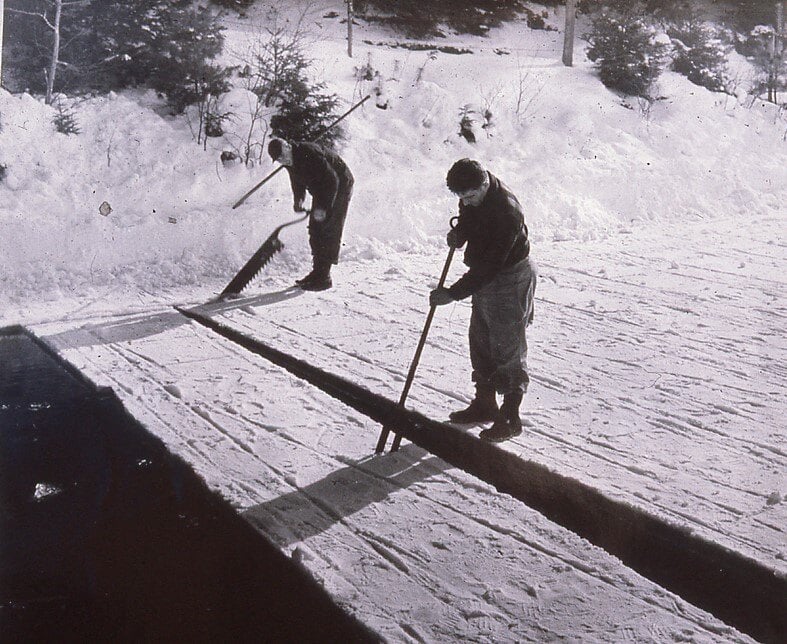
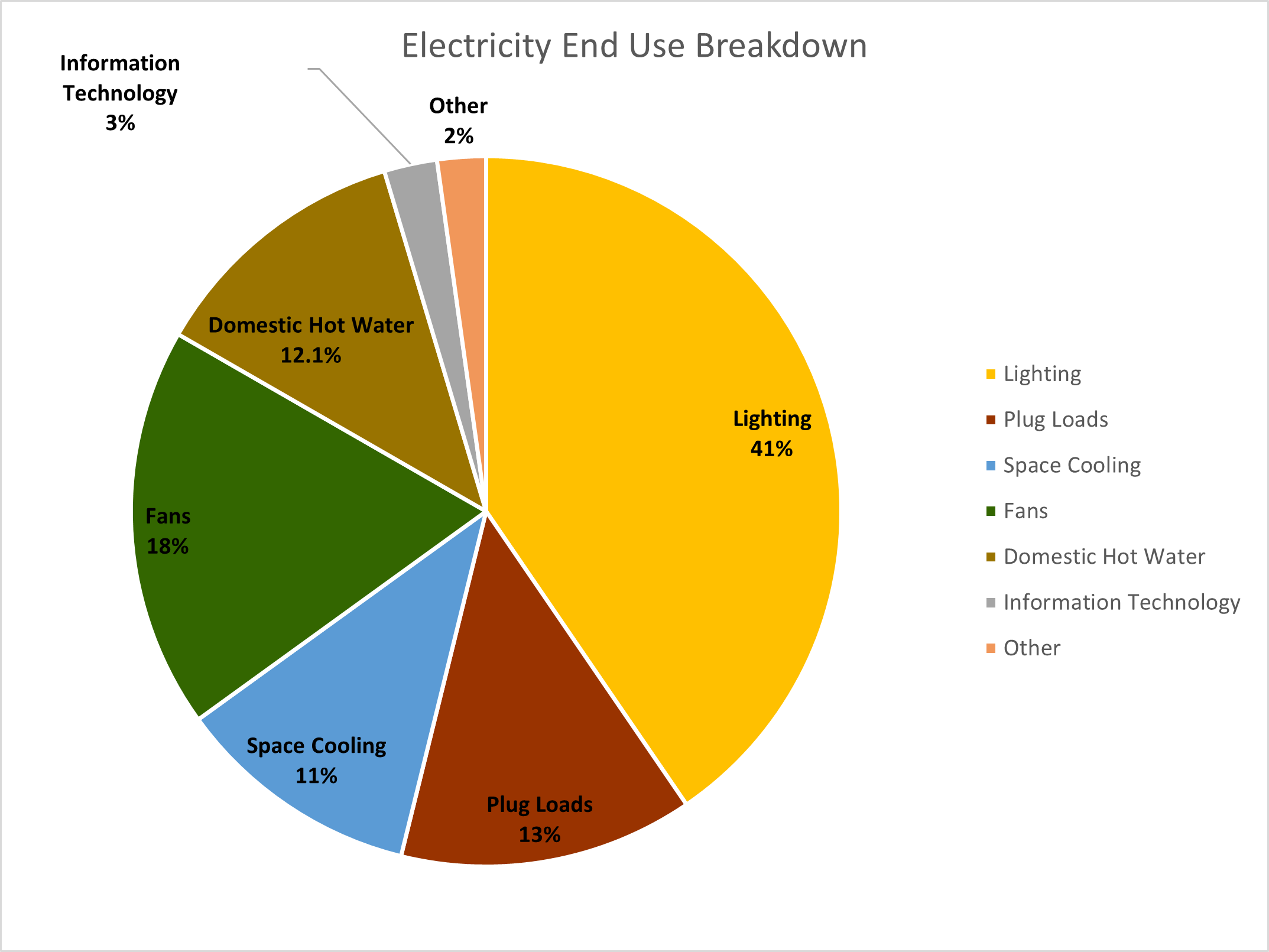

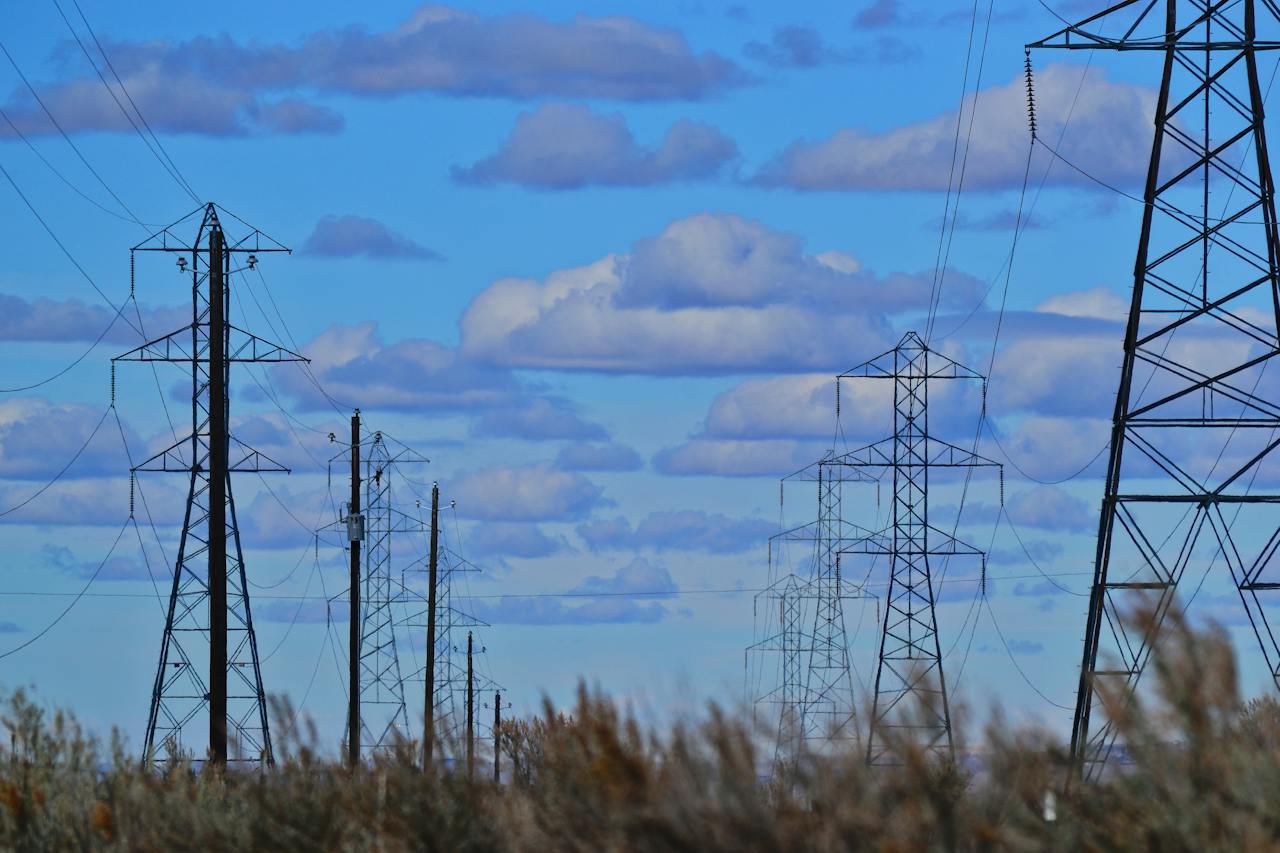






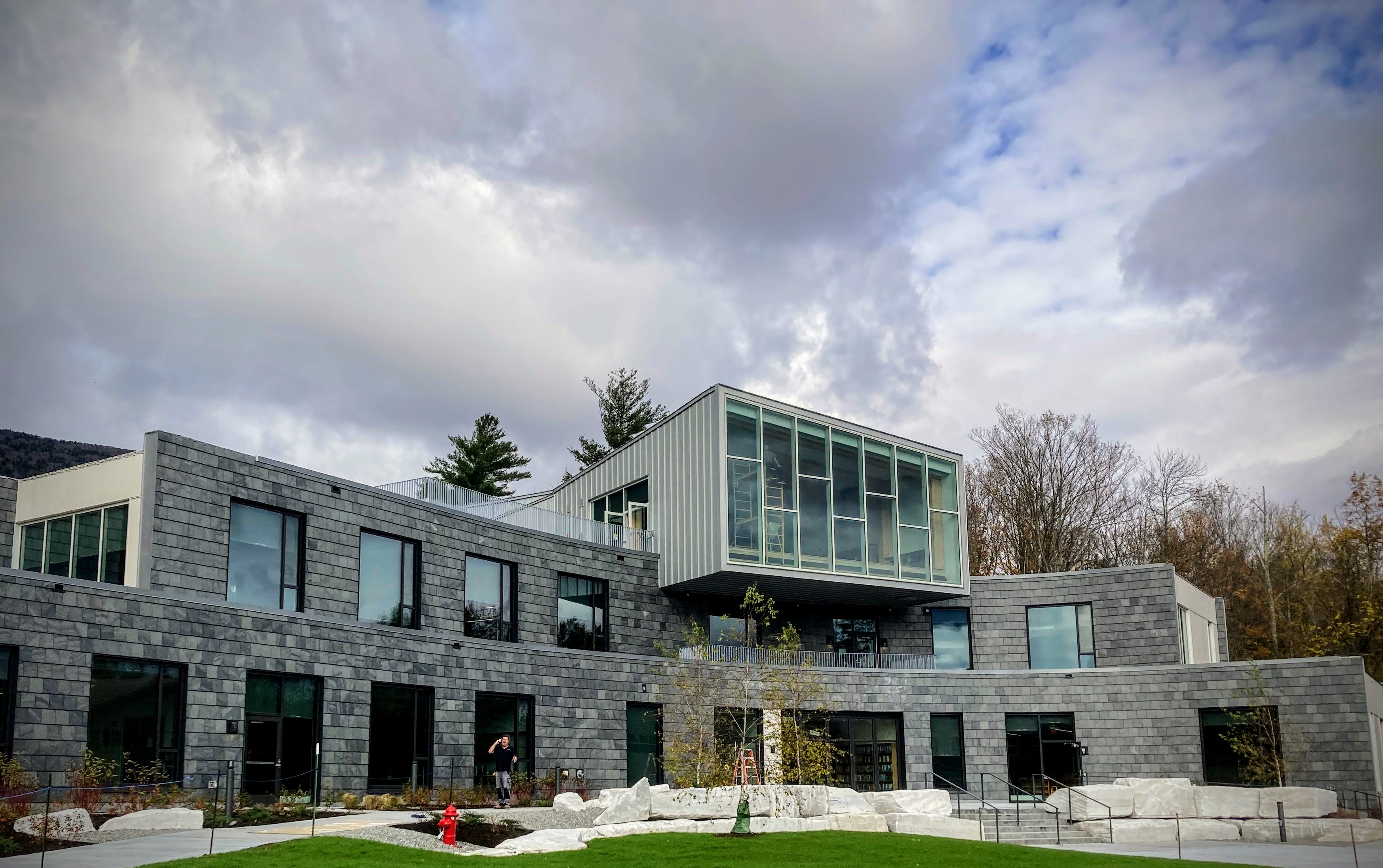
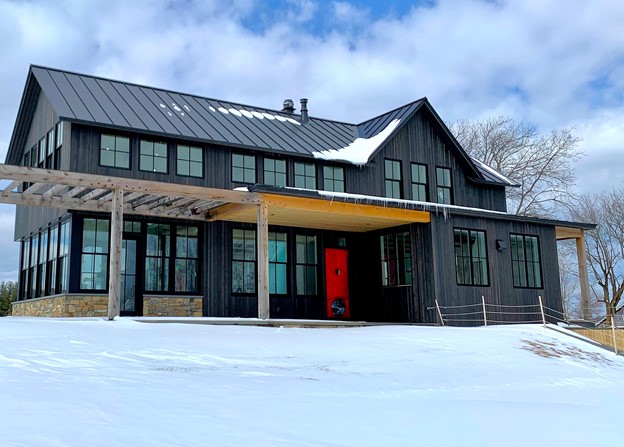


.jpg)

.jpg)

.jpg)





.jpg)

.jpg)






















.jpg)









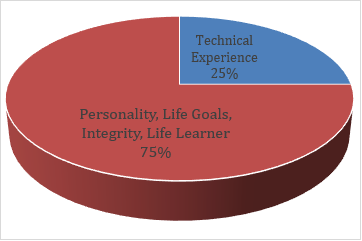




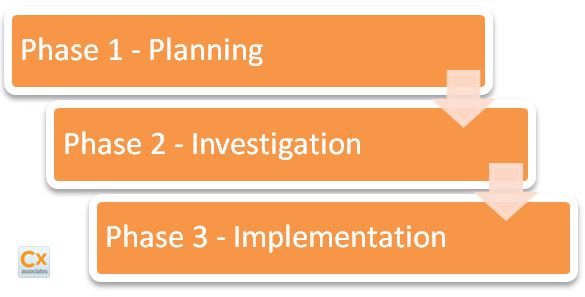




















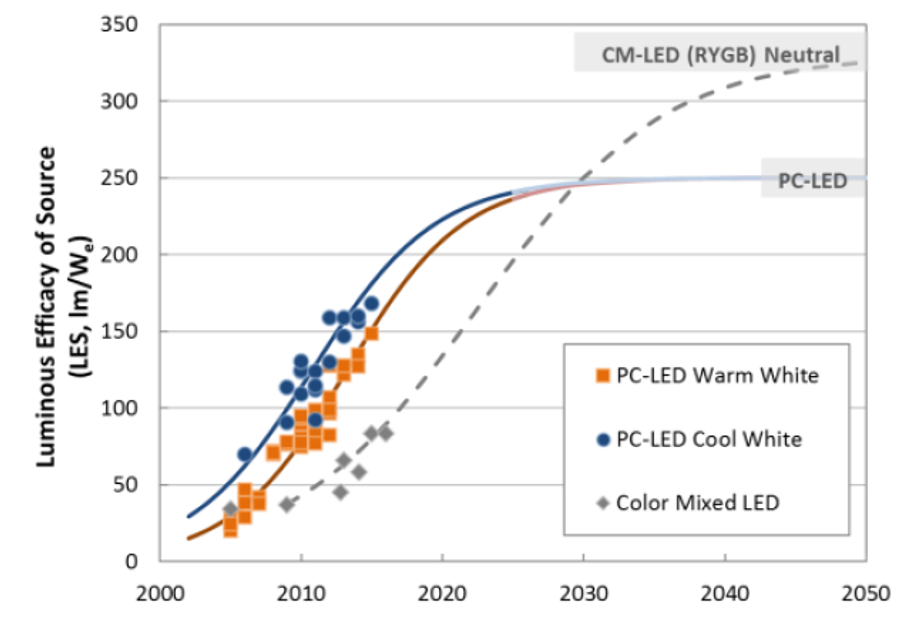










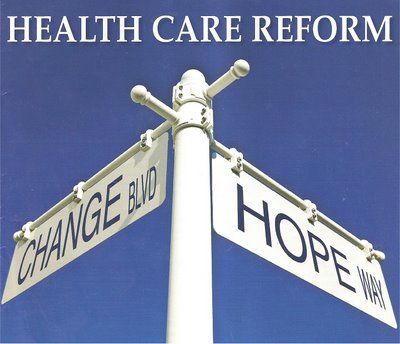
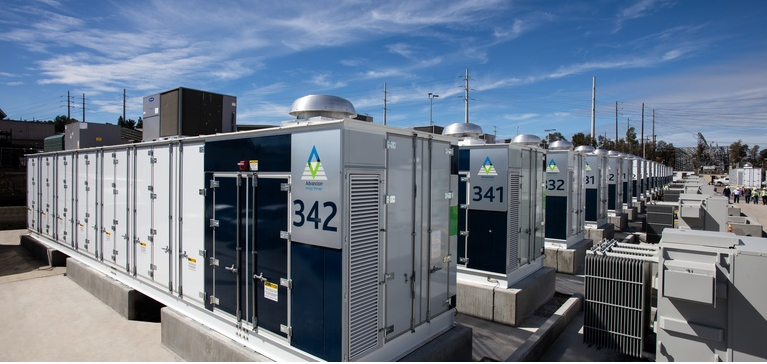
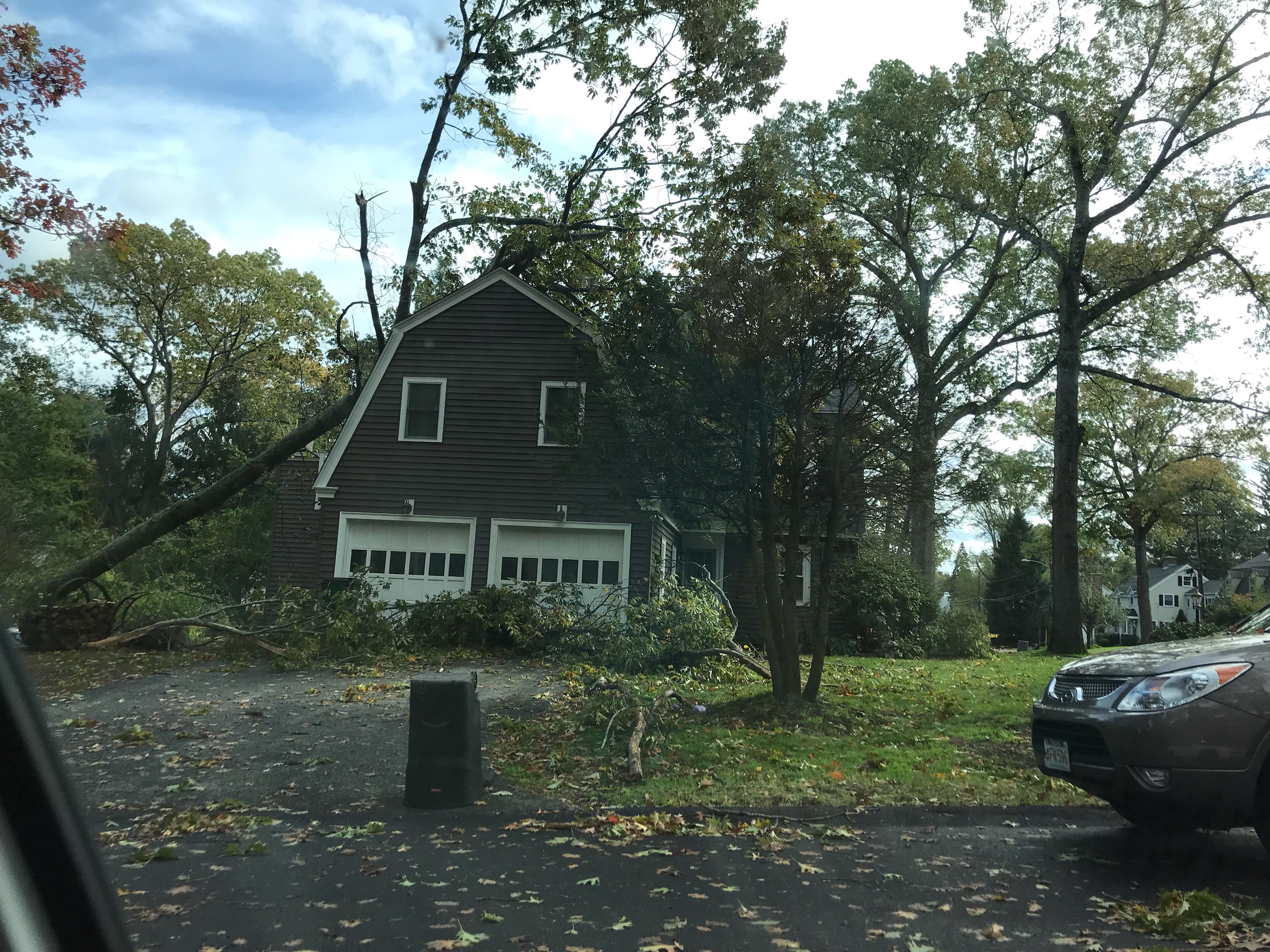







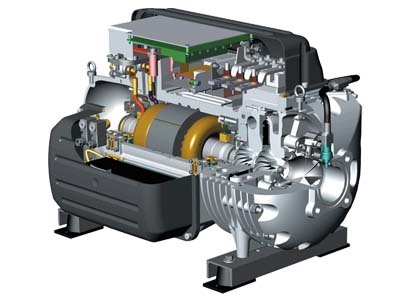
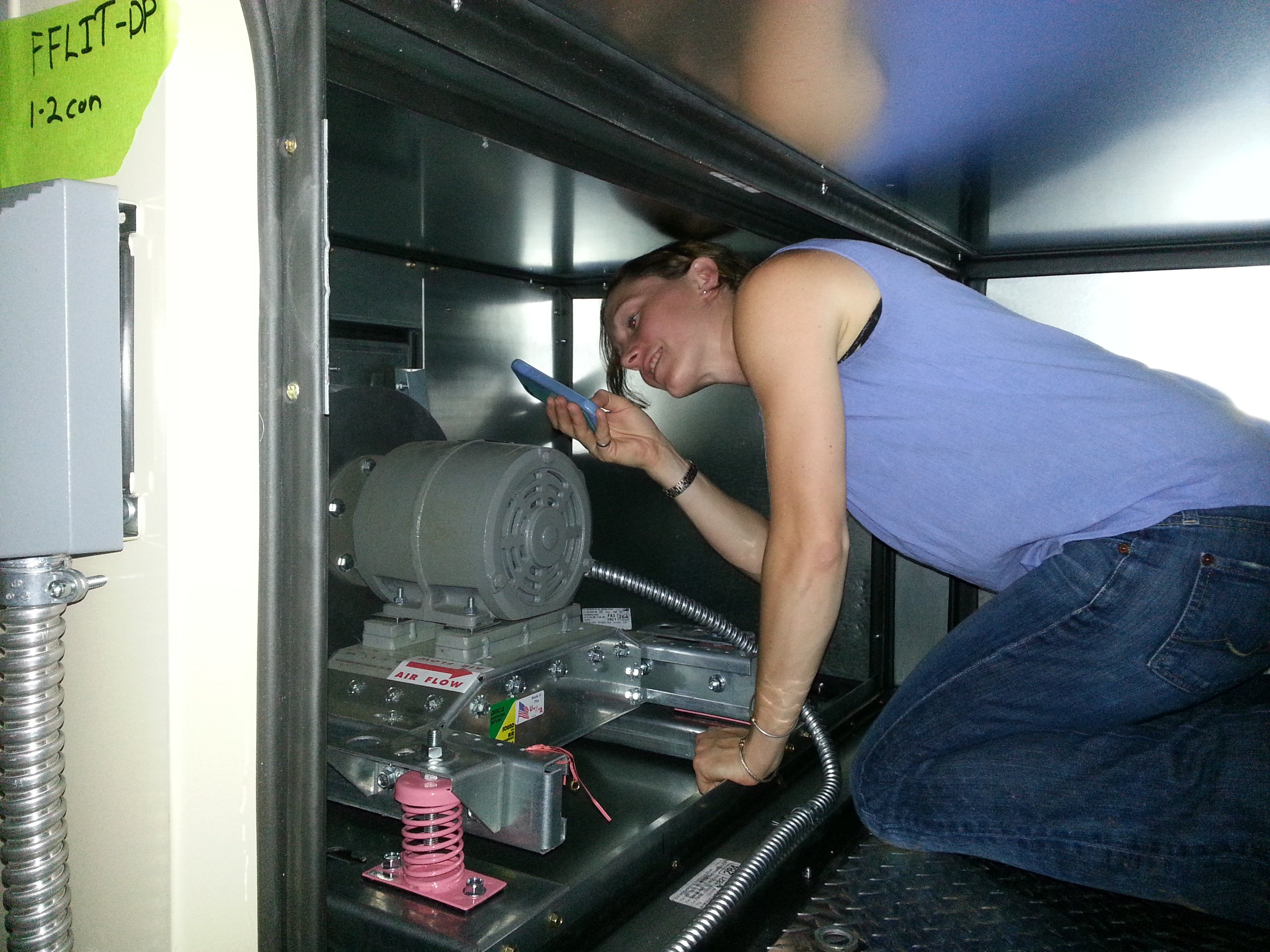




.jpg)
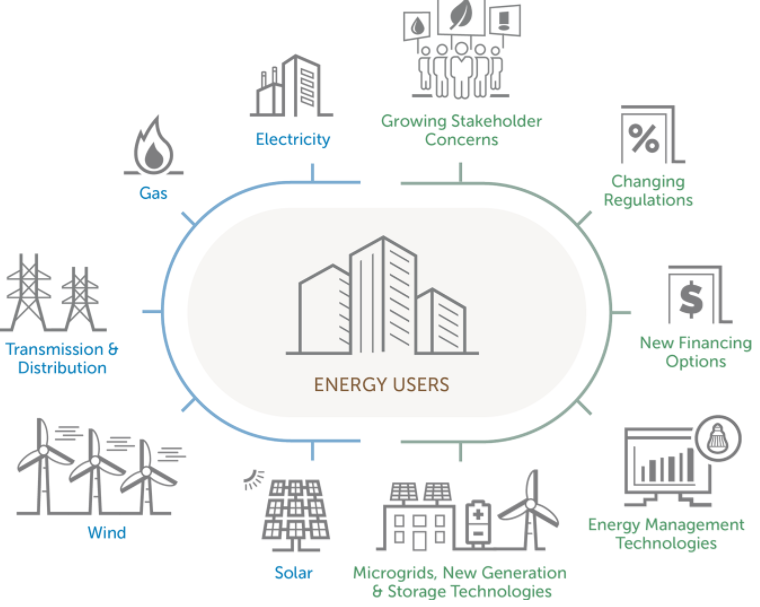






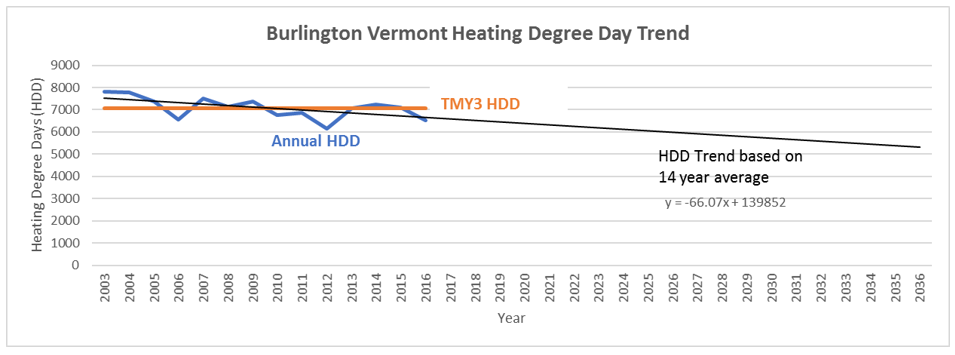

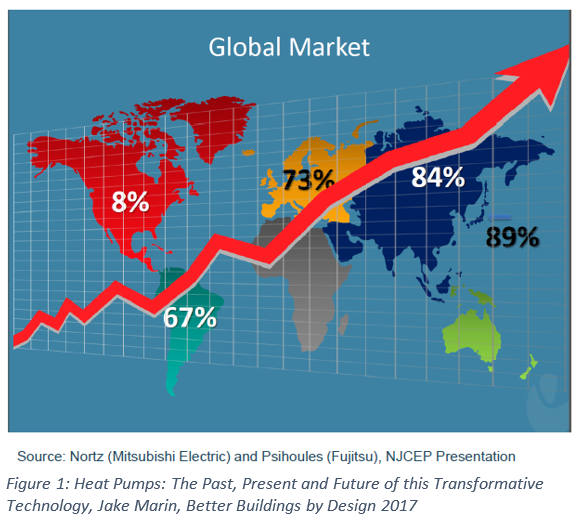







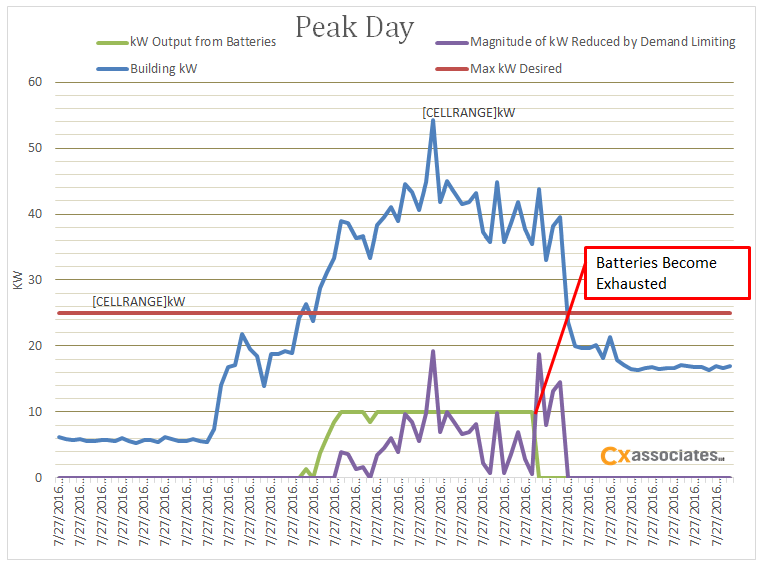



.jpg)

